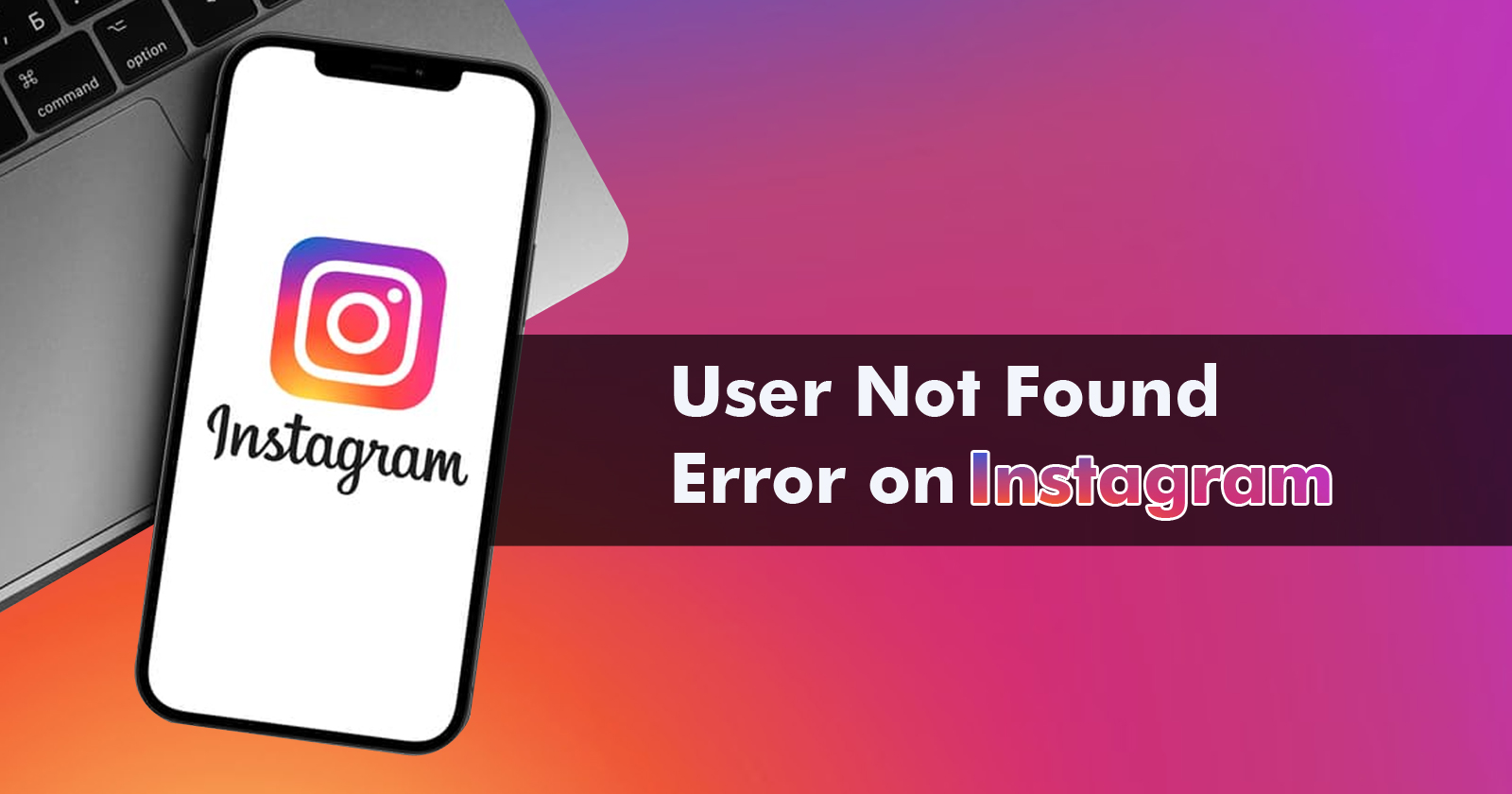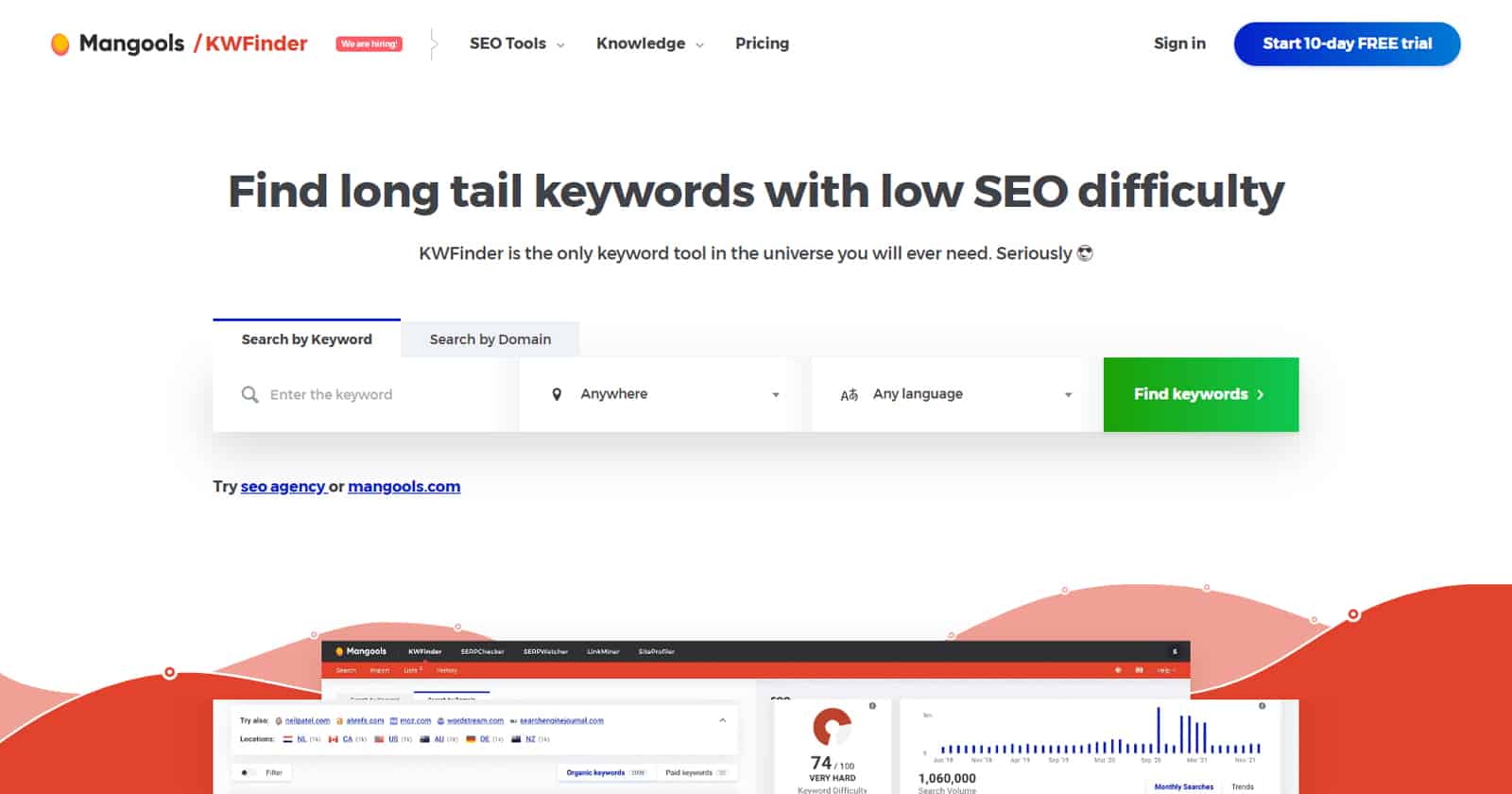Mastering Your Website Rankings: The Essential SEO Checklist for 2024
Find the definitive SEO Checklist for 2024. Master the latest best practices, tips, and techniques to achieve top rankings. Expert insights by PageTraffic.

In the contemporary digital landscape, businesses and website proprietors place a premium on enhancing online visibility and attracting fresh clientele. The linchpin for realizing these ambitions is search engine optimization (SEO). The tactics enumerated in our exhaustive SEO checklist can assist you in refining your website and bolstering organic traffic.
Our checklist encompasses both on-page and off-page SEO approaches, grounded in industry benchmarks and the latest search engine algorithms. Each method, spanning keyword exploration to content and technical fine-tuning, is meticulously delineated to guide actionable steps. Given the dynamic nature of SEO, it’s imperative to stay abreast of its evolution. Our checklist ensures you harness cutting-edge techniques, priming your website for enduring success.
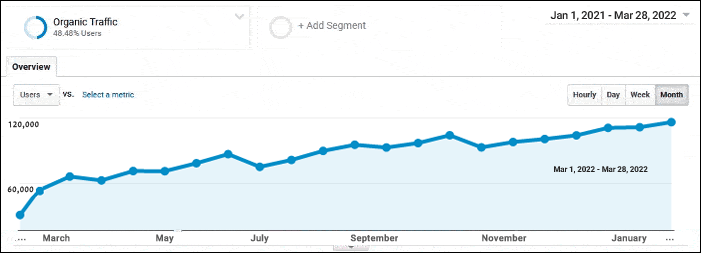
Irrespective of your sector or website’s scale, this SEO checklist proffers invaluable insights, adaptable to cater to your distinct needs. The cornerstone for digital triumph—be it for an e-commerce portal, a personal blog, or a corporate website—is amplifying your search traffic.
Are you poised to elevate your website’s SEO and witness a marked surge in organic search traffic? Let’s delve into tactics that can amplify search traffic and magnify your digital footprint. Armed with our comprehensive SEO checklist, brace yourself to ascend search engine echelons and outpace competitors!
How to Use This SEO Checklist
Contents
- 1 How to Use This SEO Checklist
- 2 SEO Basics Checklist
- 3 Technical SEO Checklist
- 3.1 EAT Signals
- 3.2 Make Sure Your Site Is Mobile-Friendly
- 3.3 Ensure Your Website Loads Quickly
- 3.4 Discover and Resolve Crawl Issues
- 3.5 Discover and Correct Indexing Mistakes
- 3.6 Increase Security With HTTPS
- 3.7 Get Rid of Duplicate Content
- 3.8 Look for Canonical Tags
- 3.9 Fix Your Broken Links
- 3.10 Using Structured Data
- 3.11 Fix Orphaned Pages
- 4 Keyword Research Checklist
- 5 Content Checklist
- 5.1 Take Featured Snippets
- 5.2 Engage Your Readers With Questions
- 5.3 Organize Your Content Using Heading Tags
- 5.4 Write in Brief Sentences and Paragraphs
- 5.5 Create a Table of Contents With Clickable Links
- 5.6 Using Pictures, Videos, and GIFs
- 5.7 Use Schema Markup
- 5.8 Keep Your Content-Length in Mind
- 5.9 Keep Your Content Up to Date
- 6 On-Page SEO Checklist
- 7 Link Building Checklist
- 8 FAQs
Envision your SEO strategy akin to a construction endeavor. Analogous to erecting a house, it’s pivotal to lay a robust foundation before superimposing subsequent layers to craft a sturdy and resilient edifice.
The SEO checklist presented herein adheres to this philosophy, spotlighting the technical facets that undergird your SEO undertakings. As you layer supplementary components to complete a house’s construction, you can enrich content and forge potent linkages.
This structured approach ensures you create a resilient bedrock for your SEO endeavors, paving the way for sustainable outcomes and heightening your website’s prominence in search outcomes.
Online marketing service providers utilize comprehensive SEO checklists to ensure optimal performance for their clients’ websites. Through these curated lists, they systematically address every aspect of search engine optimization. Leveraging an SEO checklist guarantees a structured approach, maximizing visibility and rankings for clients in search results.
SEO Basics Checklist
When embarking on your SEO (Search Engine Optimisation) journey, understanding the basics is pivotal. This section introduces you to essential tools and plugins which can amplify the potency of your SEO endeavors.
While the urge to gloss over this section might beckon, it’s imperative to give it due attention. These tools and plugins can be pivotal in shaping your SEO trajectory. Regrettably, many individuals tend to overlook or misapply them.
Without further ado, let’s delve into some quintessential SEO tools and plugins to solidify your foundational grasp.
Set Up Google Search Console
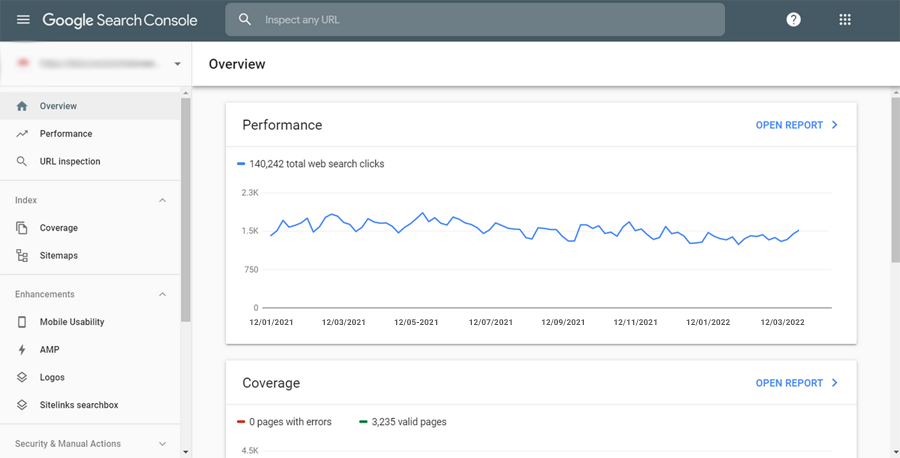
Google Search Console is a quintessential tool for all webmasters, offering a robust, cost-free suite for SEO insights. This platform allows you to monitor your website’s performance within search results and grants insights into how Google perceives your site.
Its capabilities are vast. It empowers users to detect website anomalies, gauge their presence within the search engine results pages (SERPs), identify high-performing keywords, and even navigate through Google’s page experience metrics. Furthermore, submitting your website’s sitemap is a breeze with this tool.
In essence, the Google Search Console is indispensable for orchestrating successful SEO strategies, bestowing upon website owners a distinct competitive advantage.
Implement Bing Webmaster Tools
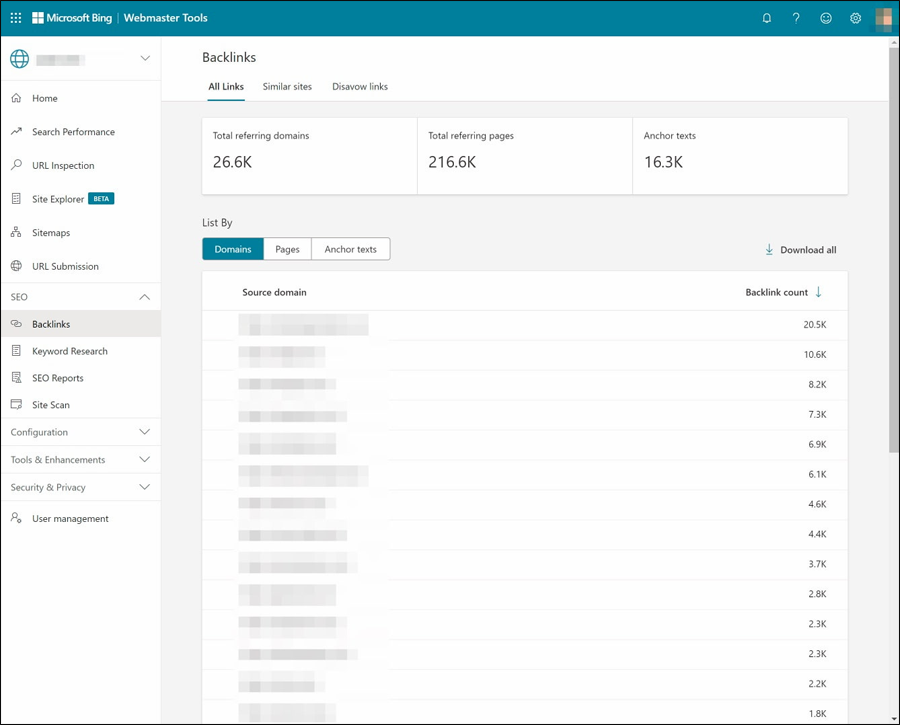
Bing Webmaster Tools is akin to Google Search Console but tailored for the Bing search engine. Proper configuration is a must if you’re keen on bolstering your presence on Bing.
Bing, whilst not enjoying Google’s overwhelming popularity, still garners over a billion monthly visits, commanding a search engine market share of 7.89%.
Given this considerable footprint, it’s prudent to harness Bing Webmaster Tools and fine-tune your website for Bing. And for tracking your progress, Bing rank tracker tools can be instrumental in gauging your site’s performance within Bing search results.
Initiate Google Analytics

Without tangible metrics, how do you ascertain progress? Navigating SEO without metrics is akin to shooting arrows blindfolded.
Enter Google Analytics. This tool furnishes granular insights into a pivotal facet of your website: its visitors. Google Analytics offers a treasure trove of data regarding your audience’s engagements, proving invaluable for refining SEO.
With Google Analytics, myriad metrics come under scrutiny. It offers insights into leads, conversions, traffic origins, user demographics, marketing efficacy, and even pinpoints your website’s stellar content. Think of it as having a digital detective on your payroll.
And the cherry on top? Google Analytics is user-friendly. Its setup is swift, often wrapping up in a mere ten minutes. If you’re earnest about mastering SEO, Google Analytics is an indispensable ally in your toolkit.
Install an SEO Plugin
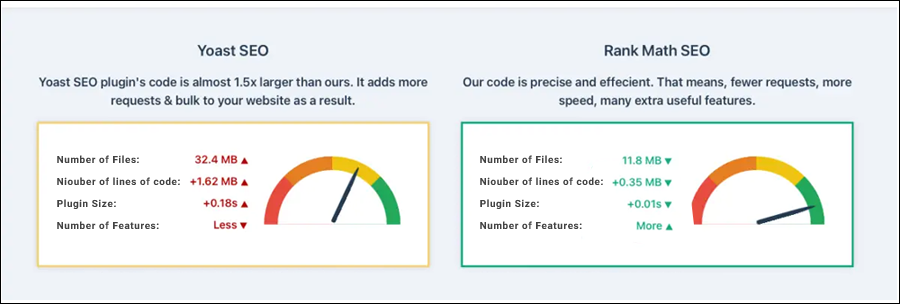
For WordPress sites, it’s advisable to install either Rank Math or Yoast SEO. Rank Math has recently edged out Yoast in popularity, offering a suite of advanced features that significantly bolster SEO. It boasts an intuitive interface suitable for users across all skill levels and doesn’t compromise site speed. Rank Math streamlines technical and on-page SEO tasks, making optimisation more accessible.
On the flip side, Yoast SEO has long been a favored choice amongst WordPress aficionados. It equips users with a plethora of tools and functionalities to enhance SEO endeavors. Even with the rise of Rank Math, Yoast SEO retains its stature as a reputable plugin.
Choosing between Rank Math and Yoast SEO boils down to individual needs and preferences. Both plugins bring their strengths to the table and can substantially aid in optimizing your WordPress site for search engines. It’s worth diving into their attributes to determine which aligns best with your needs.
Generate and Upload a Sitemap
While Google’s prowess is undisputed, it’s fair to say they don’t always get everything spot on. To guarantee that Google spots and catalogs all of your web pages, some pivotal steps warrant attention. Such steps are instrumental in amping up your SEO and expanding your digital footprint.
The question then is: How do you achieve this? The optimal route is to furnish Google with your XML sitemap.
If XML sitemaps sound like Greek to you, envisage them as a comprehensive file detailing every URL on your site. It’s akin to handing Google an intricate blueprint of your entire online domain. The icing on the cake?
Google Search Console makes this a breeze. So, relay your sitemap to Google and bask in the enhanced visibility your site garners.
Create a Robots.txt File

Did you know you wield the power to dictate which pages from your site feature in search results? This power is harnessed via a robots.txt file. At its core, this file signals to search engines such as Google which specific URLs you prefer omitted from their indices and, by extension, search outcomes.
There may be certain pages on your site you’d rather not surface directly in search engine results. These could encompass PDFs or specific utility pages like login, checkout, confirmation, or acknowledgment sections. The robots.txt file allows you to effectively shield these pages from search engine crawlers, ensuring your audience encounters only the pages you deem appropriate.
Crafting a robots.txt file is a cinch with tools like Rank Math. Upon installing Rank Math, you can effortlessly conjure a robots.txt file at no extra cost. The pièce de résistance?
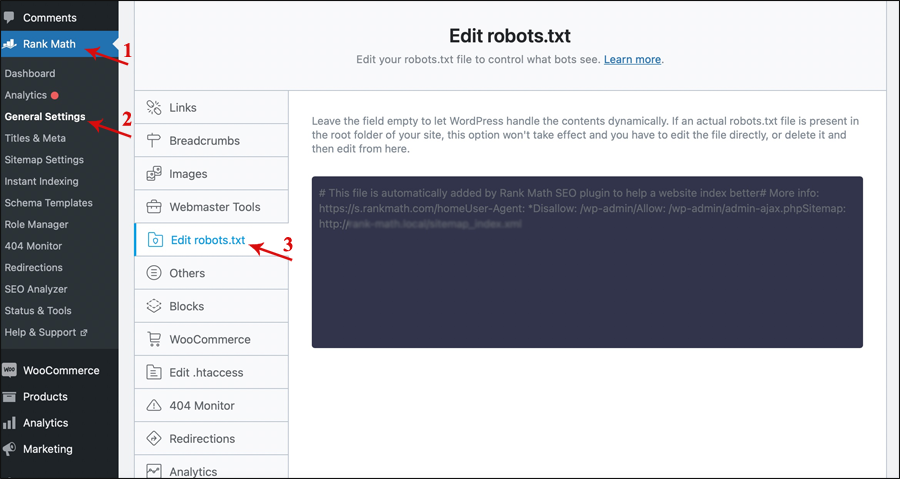
It’s fully customisable to your exact specifications. It stands as a nifty tool in ensuring search engines index your site’s content judiciously, shielding sensitive pages from the public eye.
Technical SEO Checklist
EAT Signals
To achieve higher rankings on Google, your site needs robust EAT signals. EAT stands for Expertise, Authority, and Trustworthiness. These markers convey to Google that your business is credible and trustworthy, thereby making them more inclined to direct traffic your way.
In essence, regardless of your website’s subject matter, possessing solid EAT signals is paramount. Without these markers, your website may struggle to clinch prominent positions in search results. This is especially salient for site owners handling YMYL content, an acronym for “Your Money or Your Life”. YMYL pertains to sectors like health, finance, safety, and other areas that significantly influence individuals’ well-being.
In short, robust EAT signals are vital for attaining good Google rankings, underlining to Google that your business is legitimate and reliable. This is particularly pertinent for sites featuring YMYL content.
Make Sure Your Site Is Mobile-Friendly
In the realm of SEO, possessing a mobile-responsive site is of paramount importance. Google’s mobile-first indexing update, which rolled out in 2019, further accentuates this. This essentially implies that if your site lacks an optimized mobile version, it’s unlikely to secure top spots in search results.
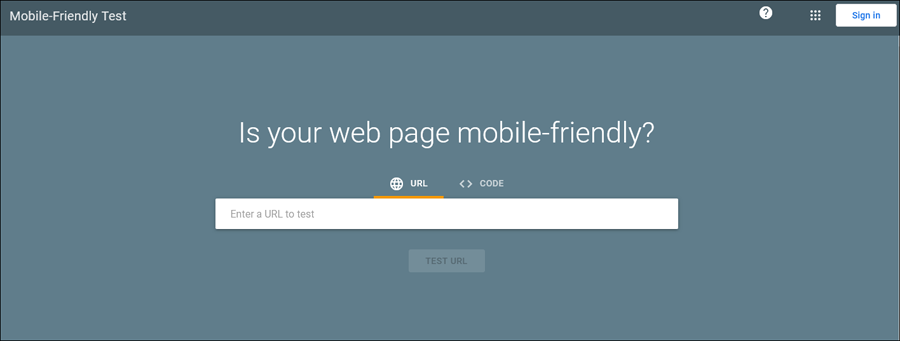
If you’re in two minds about whether your site meets the mobile-friendly criteria, you can utilize Google mobile-friendly test. The icing on the cake? It’s absolutely free of charge! Just give it a whirl, and it will promptly inform you of your website’s mobile compatibility status.
Ensure Your Website Loads Quickly
Laggy sites can seriously dent user experience, a pivotal ranking criterion. Google’s page experience update further underscored site speed’s significance. A multitude of folks routinely underplay the nexus between site speed and SEO. Yet, a quicker site typically draws more organic traffic, making this a focal point for every new client.
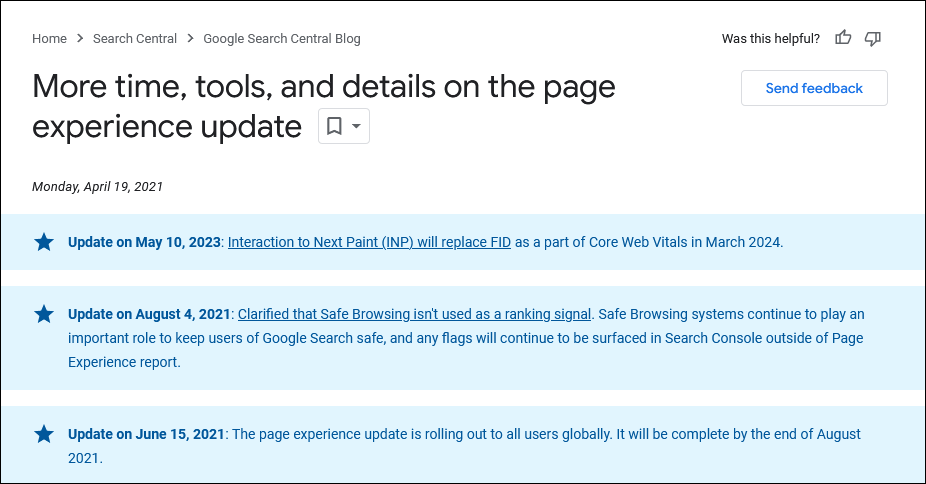
To gauge your website’s page experience, turn to the Page Experience report within Google Search Console. The goalpost is to register a high proportion of top-tier URLs in both desktop and mobile assessments, inching as close to the 100% benchmark as feasible.
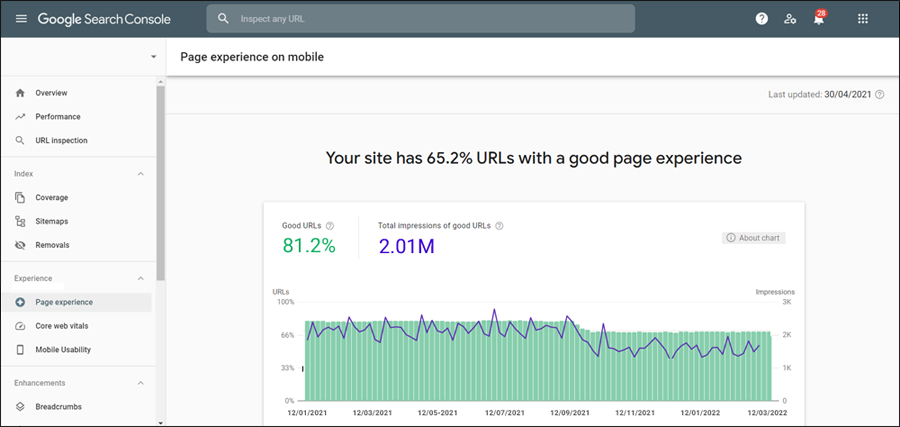
If you find hurdles in this quest, there are six cost-free tactics you can employ to expedite your website’s load time and optimize its performance.
Discover and Resolve Crawl Issues
If Google encounters issues when crawling your website, indexing can become a challenge. To ensure your site’s visibility on search engines, it’s paramount to rectify these errors promptly.
One effective way to identify and resolve crawl issues is by using robust SEO tools like Semrush or Ahrefs. These tools can conduct comprehensive audits of your site, pinpointing any crawl-related problems that need addressing.
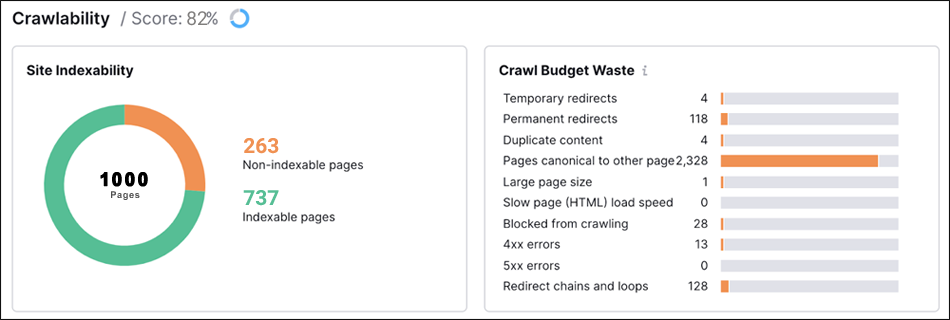
The beauty of these tools lies in their ability to not only highlight errors but also offer solutions to rectify them, simplifying the crawl issue resolution process.
So, it’s vital to devote time to rectify any anomalies identified during the audit and delve into potential root causes. The effort and time you’ll need to invest will vary based on your website’s size. However, the benefits of having a smoothly indexed website make this endeavor undeniably worthwhile.
Discover and Correct Indexing Mistakes
Even if Google can crawl your website, it doesn’t automatically mean they’ll index it. Indexing issues arise when Google struggles to include certain sections of your site in its repository. It’s essential to understand that if vital parts of your site aren’t indexed, they won’t feature in the search engine results pages (SERPs).
Several common challenges can precipitate indexing issues. One arises when a URL on your site is tagged “noindex”, signaling Google not to display it in the search results. Another potential hiccup could stem from the robots.txt file, which might block a URL from being accessed by search engine crawlers.
Yet another issue could be a URL that’s inaccessible, yielding a 404 error, which can impede the indexing process. Lastly, redirect errors could hinder Google from accurately indexing your site.
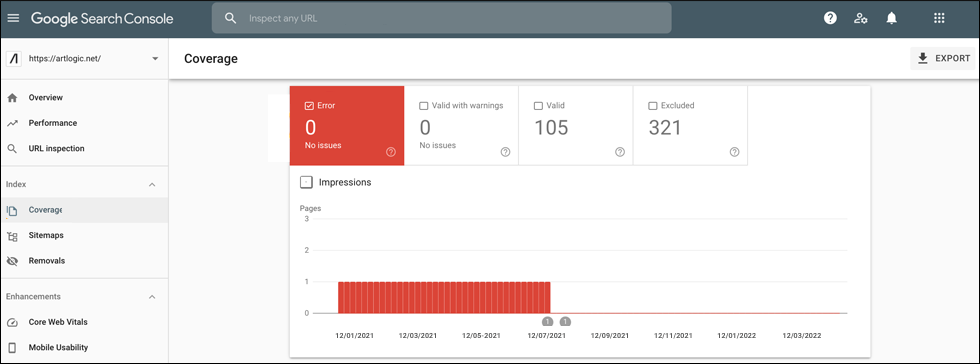
To pinpoint any crawl issues that Googlebot might have stumbled upon, utilize Google Search Console. Once inside, navigate to the Coverage report. This will outline any existing crawl anomalies or alerts. Alternatively, you can leverage the SEMRush trial to identify any indexing impediments.
After identifying these issues, it’s of paramount importance to take corrective actions. The indexing process, often underestimated by website owners, plays a pivotal role in determining your site’s visibility and rank in the SERPs.
Increase Security With HTTPS
HTTPS, or Hypertext Transfer Protocol Secure, holds weight when determining website rankings. In today’s digital age, having a secure site is non-negotiable, given its mounting significance as a ranking parameter.
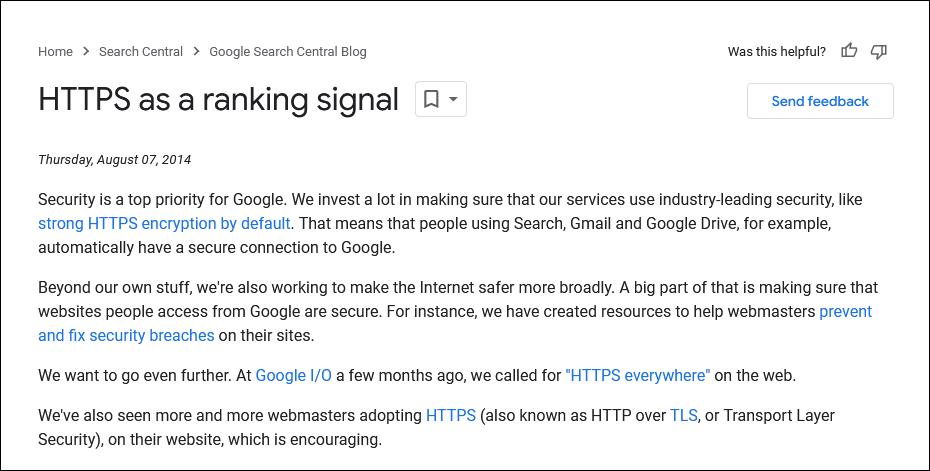
HTTPS wields a multifaceted influence on your online presence. Primarily, SEO directly influences your site’s stature in search results. Secondly, it considerably bolsters your website’s overarching security. Lastly, and crucially, it ensures user data you capture remains safeguarded, reinforcing their trust in your platform.
In essence, Google perceives HTTPS as an indispensable facet for all websites. To facilitate the HTTPS connection, which encrypts data transactions between your site and its users, your website must be equipped with an SSL certificate.
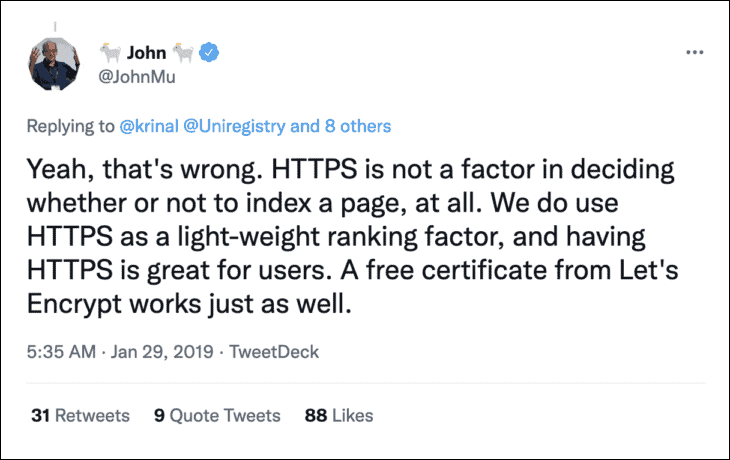
To verify your website’s HTTPS compliance, simply access your homepage via a browser and check for the padlock symbol in the address bar. If present, you’re in the clear!

Bear in mind, however, not all web hosts afford your site the same protective measures. Various factors can influence the potency of your SSL certificate. To gauge your site’s security robustness, you can employ a tool known as the SSL Labs test. After scrutinizing numerous elements, your SSL certificate will be assigned a grading, ranging from A+ to F, enabling you to discern your site’s security standards.
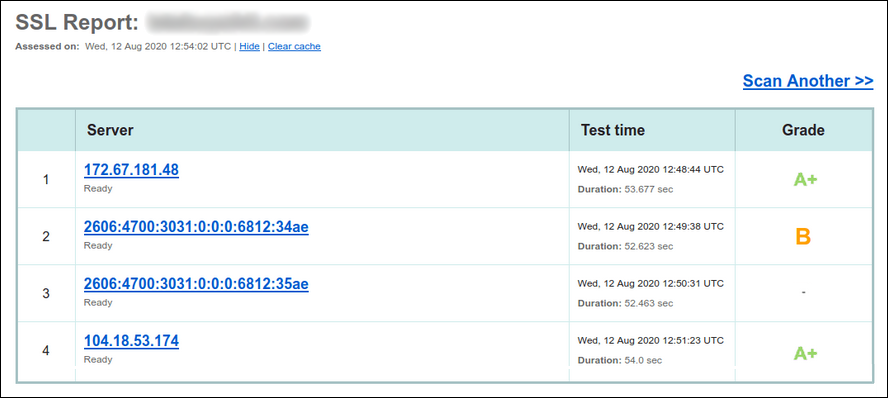
Get Rid of Duplicate Content
Duplicate content refers to material that appears across various websites or multiple pages of a single site. Essentially, it’s like seeing the same text replicated in numerous locations.
Such duplication can arise when individuals replicate text from one site to another or when identical information is featured across multiple pages within a site. Even staging sites, which are temporary platforms used for testing, can inadvertently produce duplicate content issues.
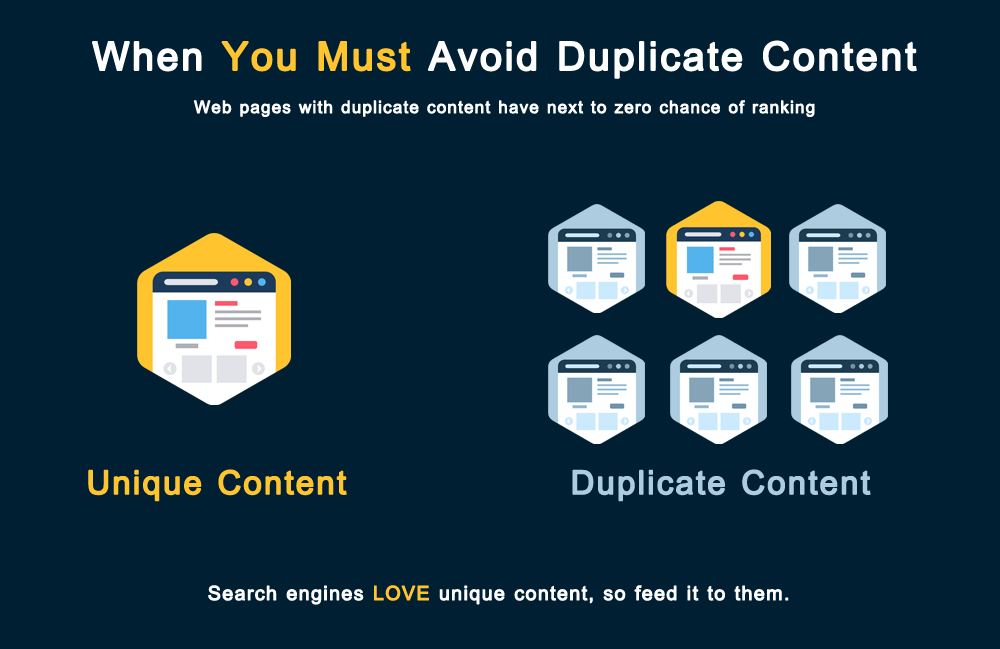
A significant downside of duplicate content is that search engines like Google often choose to rank only one of the pages that contain the replicated material. Given the unpredictability of which page they’ll choose, addressing this issue becomes crucial.
Upon detecting issues of duplicate content, it’s essential to take measures to ensure the right page is ranked on Google. One potential solution is canonicalisation, which involves designating a ‘preferred’ page and guiding search engines to give precedence to it. In effect, this means Google will disregard other duplicate pages and focus on ranking your chosen one.
Alongside canonicalisation, you may also consider using the “noindex” tag on pages that you don’t wish to rank but are causing duplication issues. This tag directs search engines not to index specific pages, mitigating potential confusion and enhancing the ranking of the intended pages.
In essence, when confronted with duplicate content, employing canonicalisation and potentially the noindex tag can be advantageous. These measures can prevent the ambiguity arising from content replication and ensure that the appropriate page earns its spot on Google.
Look for Canonical Tags
To mitigate duplicate content issues, it’s advisable to incorporate “rel=canonical” tags on a webpage. These tags signal to search engines that the site owner recognises the duplicate content and has taken steps to address the concern, thus diminishing the negative implications.
Duplication can crop up in various areas of a site, with the homepage being a common culprit. To illustrate, imagine a site hosting a blog section filled with numerous articles on similar topics. If these blogs possess distinct URLs, such as “https://www.example.com/blog/post1/,” “https://www.example.com/blog/post2,” etc., search engines might struggle to determine which URL to prioritize.
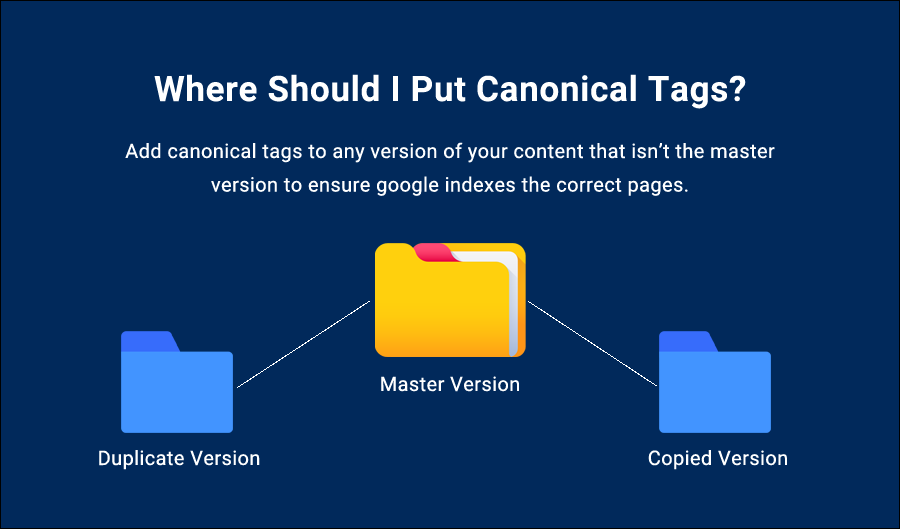
Plugins like Yoast or Rank Math offer viable solutions to counteract this dilemma. By utilizing these tools, you can append “rel=canonical” tags to pertinent web pages. Through this tag, site owners can clearly convey to search engines the preferred URL for indexing and ranking, alleviating any confusion spawned by duplicate URLs. Consequently, the website can ascertain its content’s proper representation in search results.
Fix Your Broken Links
You see, broken links can significantly undermine the SEO health of your site. Why? Simply because they can considerably tarnish the user experience. Imagine the frustration of clicking on a link only to be greeted by an error message or a dead-end. It’s off-putting, isn’t it? Encounters like these can perturb users and seed doubts about your website’s credibility.
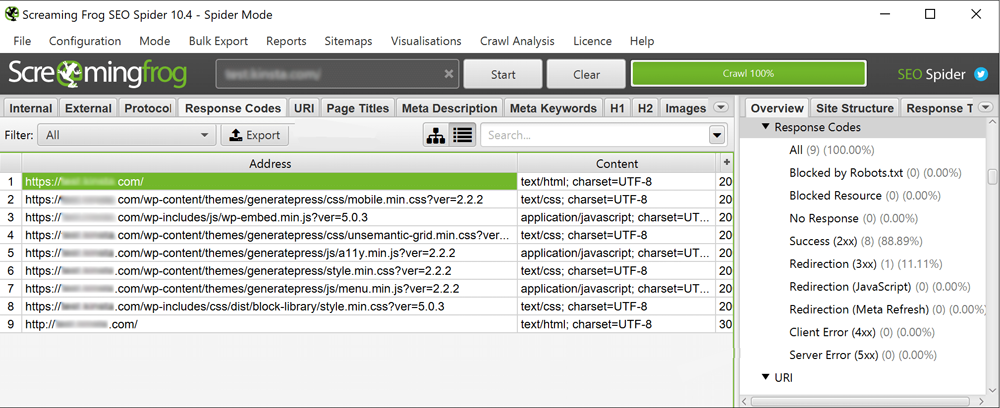
A plethora of broken links peppered throughout your site might suggest lax maintenance. Frankly, that’s not an image any site owner desires. It’s essential for visitors to perceive your platform as a trustworthy repository of information or products. Hence, vigilantly monitoring and promptly rectifying broken links is of the essence, ensuring users relish a seamless and gratifying journey on your site.
Using Structured Data
Structured data is a specific type of markup that helps search engines better understand the content on your website. This clarity allows search engines to present the material on your site more effectively in their search results pages (SERPs).

The most commonly used form of structured data is schema markup. It enriches how your site appears on search engine results pages (SERPs) by offering additional insights into various content types. Schema markup can enhance the display of data, articles, products, reviews, recipes, breadcrumbs, FAQs, and how-to guides for your business.
If you’re unsure whether your site contains structured data, you can utilize the Schema Markup Validation tool to verify its presence.
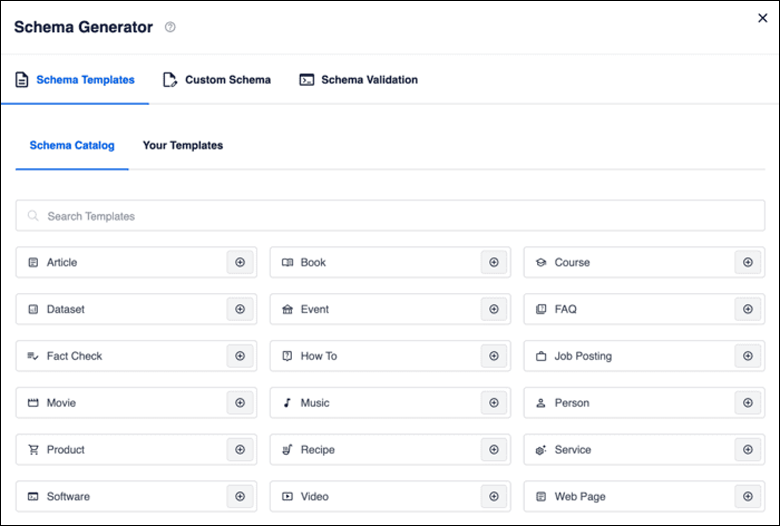
Implementing schema markup can be a tad challenging, but thankfully, there’s a handy solution in the free RankMath plugin. This tool simplifies the process of integrating various schema types into your website.

Fix Orphaned Pages
“Orphaned pages” refer to pages on a website that lack inbound links from other sections or pages, rendering them inaccessible to users and potentially hidden from search engines like Google.
Addressing orphaned pages follows a straightforward procedure. Firstly, identify these isolated pages. Tools like Ahrefs or Semrush, when used to audit a site, can spotlight orphaned pages that lack inbound links.
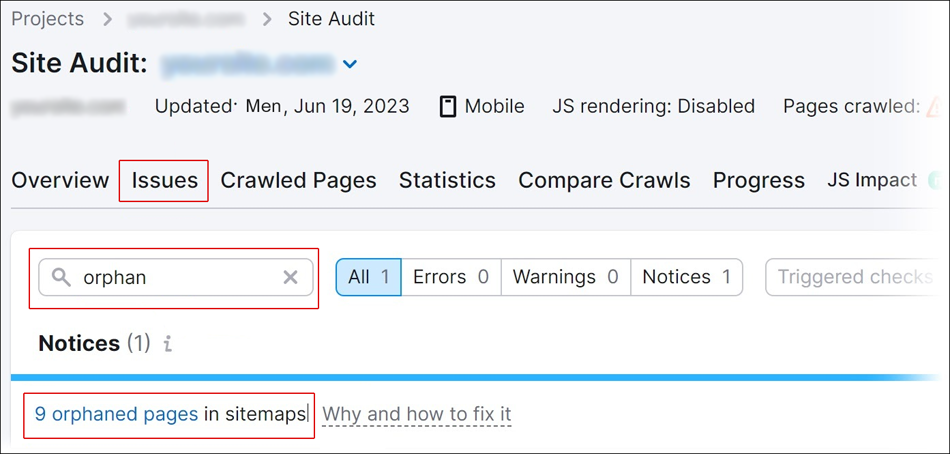
Once detected, the next step is to establish links to these orphaned pages from relevant sections on the site. This approach integrates these pages into the site’s structure, ensuring ease of access for users and visibility for search engines.
By diligently addressing orphaned pages and incorporating appropriate links, you can enhance the site’s overall usability and the visibility of its content.
Keyword Research Checklist
The significance of keyword research in SEO is paramount. When executed impeccably, selecting the right keywords can propel your sales. Conversely, if your keyword research misses the mark, ranking your website can prove challenging.
Undertaking these SEO audits will assist in identifying the ideal keywords that potential customers are searching for, shaping an astute keyword strategy in the process. These audits aim to pinpoint key and relevant keywords that can amplify traffic to your site, attracting the desired audience.
Create an Effective Keyword Strategy
A common pitfall is diving into keyword research without any overarching strategy in mind. Many simply aim to spot popular keywords and start crafting content around them. It’s vital to approach keyword selection with a more strategic mindset.
Rather than blindly chasing after lucrative keywords, consider the bigger picture. Reflect on your goals, target audience, and the message you wish to convey. Having a holistic understanding of your overarching strategy will steer your keyword choices more judiciously.
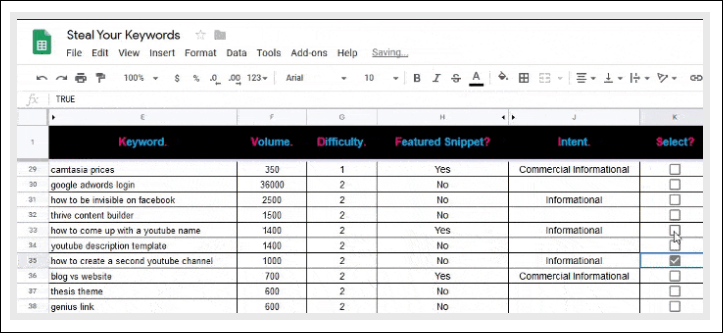
When selecting optimal keywords, it’s essential to weigh factors like search volume, competitiveness, and relevance to your content. It’s pivotal to identify keywords that are not merely in vogue but also resonate with your target demographic and align with your campaign’s objectives. By adopting this approach, you can augment your probability of success and engage the right kind of traffic.
Remember, thorough and astute keyword research is the key. It’s less about merely pinpointing popular terms and more about discovering the right keywords that will aid in realizing your goals and connecting with your intended audience.
Also Read: KWFinder Alternatives: 10 Great Alternatives to KWFinder for Better Keyword Research
Find Long-Tail Keywords With ‘Google Suggest’
There’s no need to splash out on expensive keyword research software. With a plethora of free keyword research tools available, the trick lies in selecting the effective ones and steering clear of those that don’t deliver.
A prime tool for uncovering long-tail target keywords is Google Suggest. Often referred to as Google Autocomplete, this feature provides suggestions as you type into the Google search box.
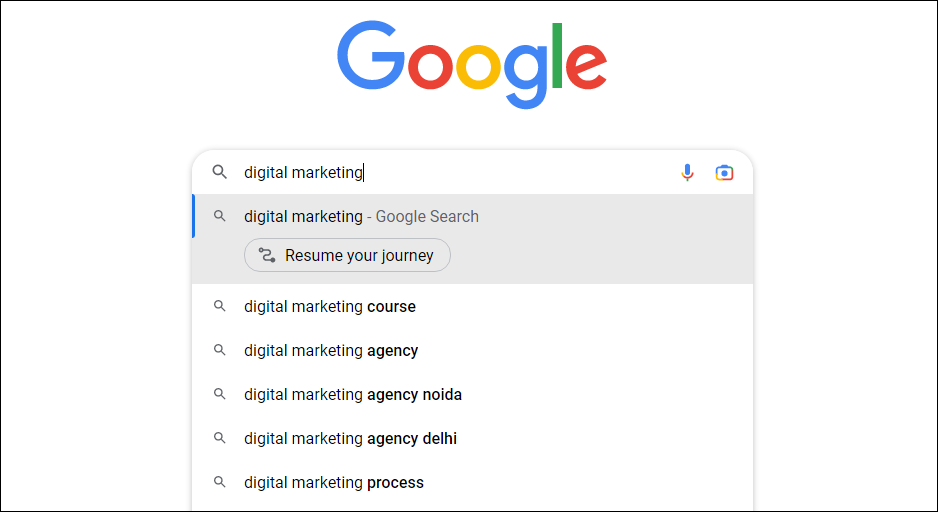
But trawling through Google for every keyword can be time-consuming. Enter Soovle, a tool that makes life easier. This free platform speeds up the process, pulling keywords from Google Suggest and offering rapid access to relevant suggestions.
To harness Soovle efficiently, users can input terms from their keyword list. This can churn out hundreds of fresh long-tail keywords in a snap, all primed for targeting.
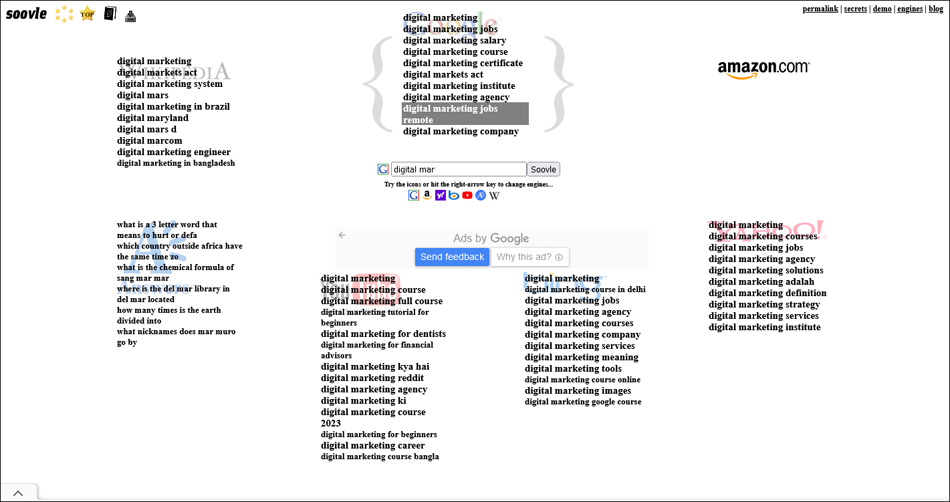
Discover Effective Keywords Using Google Keyword Planner
Google’s official offering for keyword research is the Google Keyword Planner. Primarily designed to aid Google Ads, when leveraged correctly, it can transform into a powerful SEO tool. And it doesn’t cost a penny.
What sets the Google Keyword Planner apart is the pedigree of its data, sourced straight from Google. When seeking trustworthy keyword insights, firsthand data from the primary source is unparalleled.

So, if you’re embarking on keyword research for your site or blog, explore the capabilities of the Google Keyword Planner. It’s a trove of invaluable insights that can guide your content to ascend search engine rankings.
Also Read: The 8 Best SEO Keyword Research Tools
Discover Question Keywords With AnswerThePublic
One of the savviest ways to approach keyword research is to pinpoint question keywords frequently posed by your target audience. A tool that serves this purpose brilliantly is AnswerThePublic.
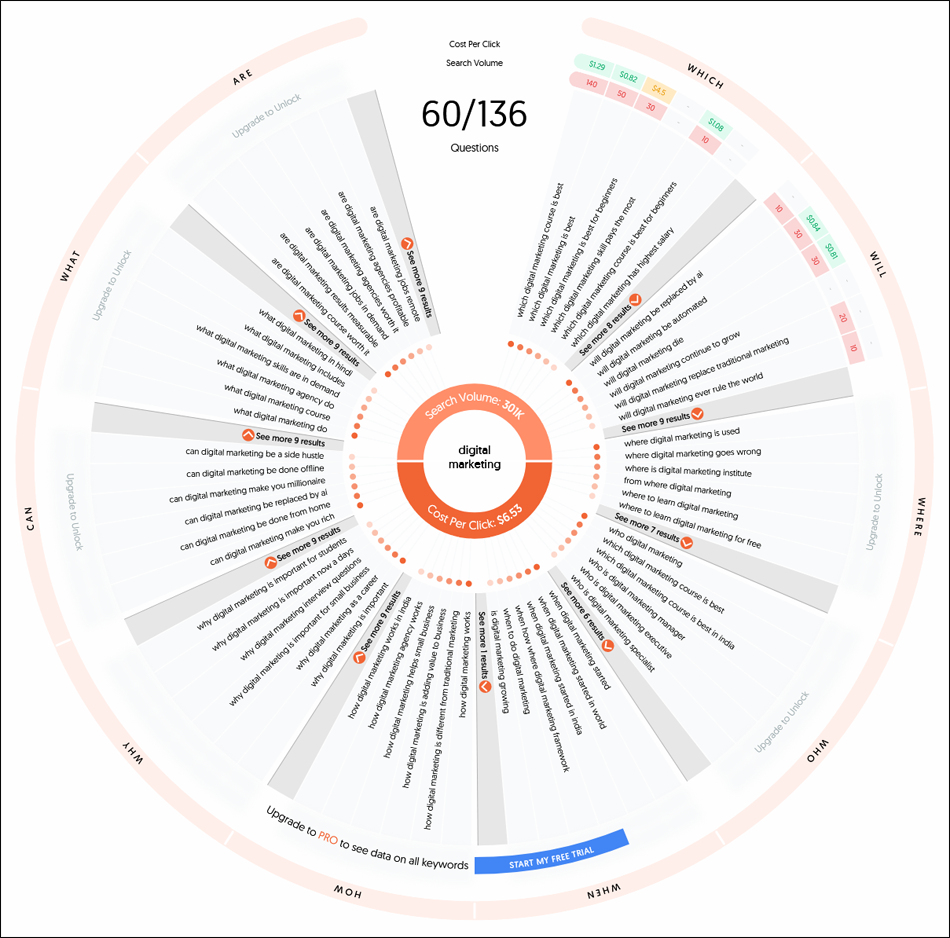
Acting as a keyword extractor, AnswerThePublic proffers a comprehensive list of queries associated with a specific keyword. This not only widens the spectrum of your target keywords but also pinpoints specific questions your content should address to cater adequately to your audience. Addressing these queries is pivotal to climbing the ranks of search engine results pages (SERPs) and converting site visitors into loyal customers.

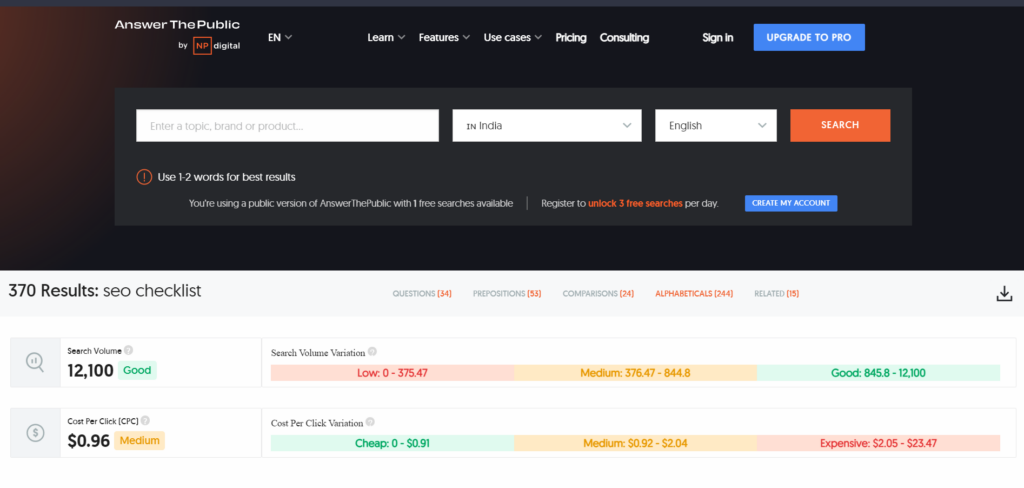
Integrating AnswerThePublic with Keywords Everywhere can amplify the efficacy of your keyword research. With this collaboration, users can directly view the search volume for each query within the tool, streamlining the process of identifying keyword queries that promise substantial search traffic for the website.
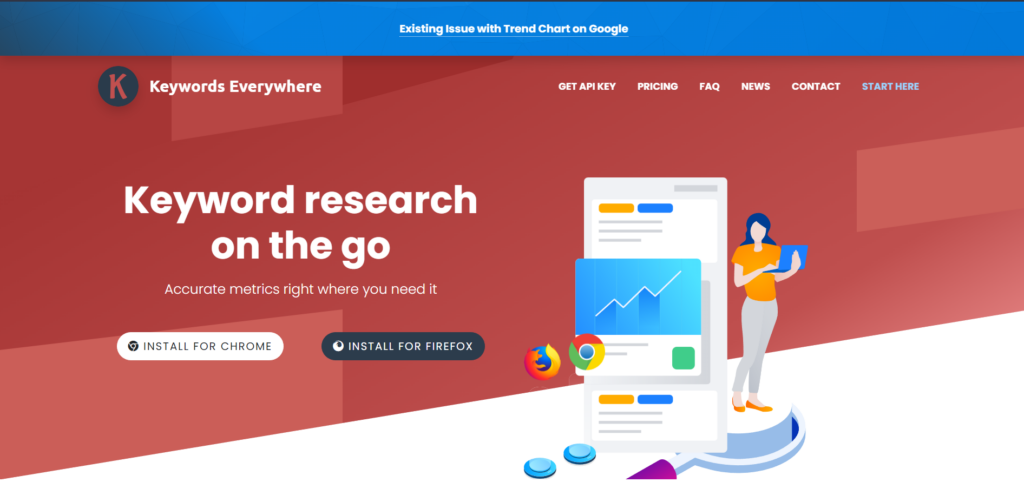
By synergising AnswerThePublic and Keywords Everywhere, users can unearth valuable question keywords and glean insights into their search volume. Such pivotal data refines content strategies and bolsters targeted website traffic.
Also Read: Top 13 Keywords Everywhere Alternative Tools in 2024
Explore Online Forums and Communities
Diving into online forums and communities is an invaluable step in keyword research. It offers an opportunity to tap into the conversations of your target audience and unearth a plethora of target keywords that even advanced keyword research tools might miss.
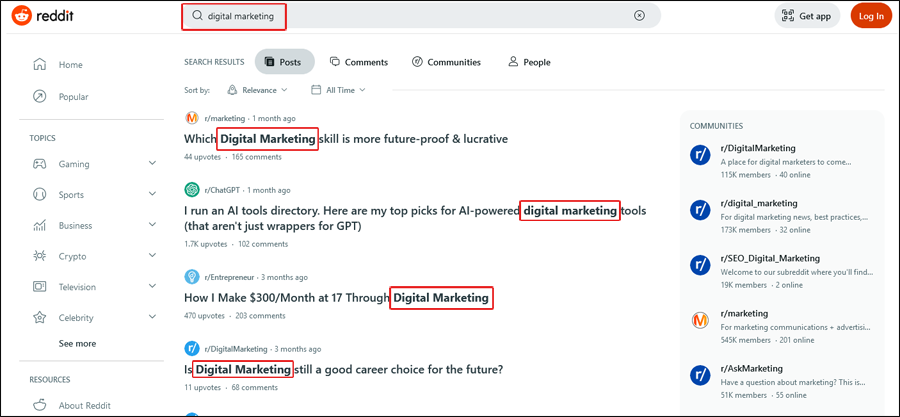
Sites like Reddit and Quora are good starting points. To dive into discussions, simply enter your target term in the search bar. Observe the terminology people frequently use and jot down topics that spark their interest.
While Reddit and Quora are commendable starting points, it’s optimal to identify niche forums and websites where your specific target audience congregates. The most straightforward approach for this is using Google. A simple search like “Your Target Keyword + forum” should yield a selection of niche sites that pique your interest.
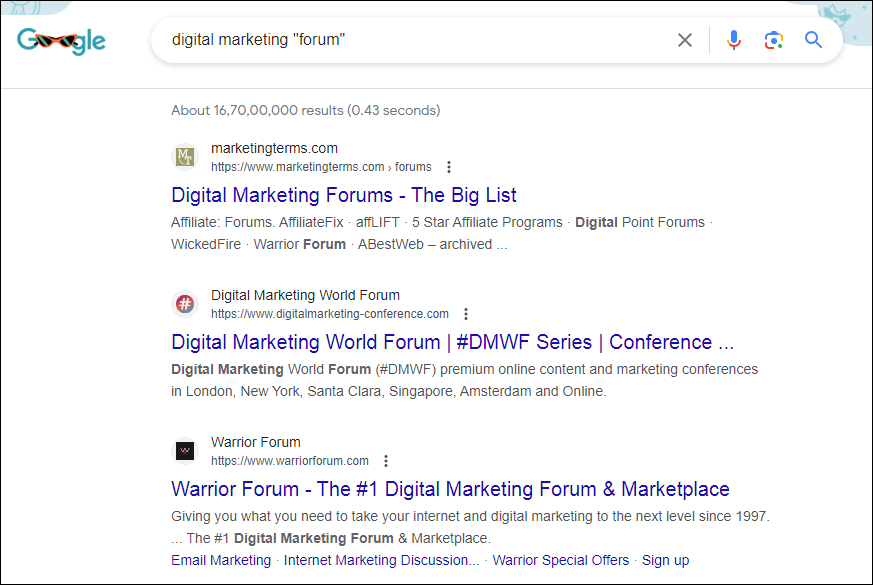
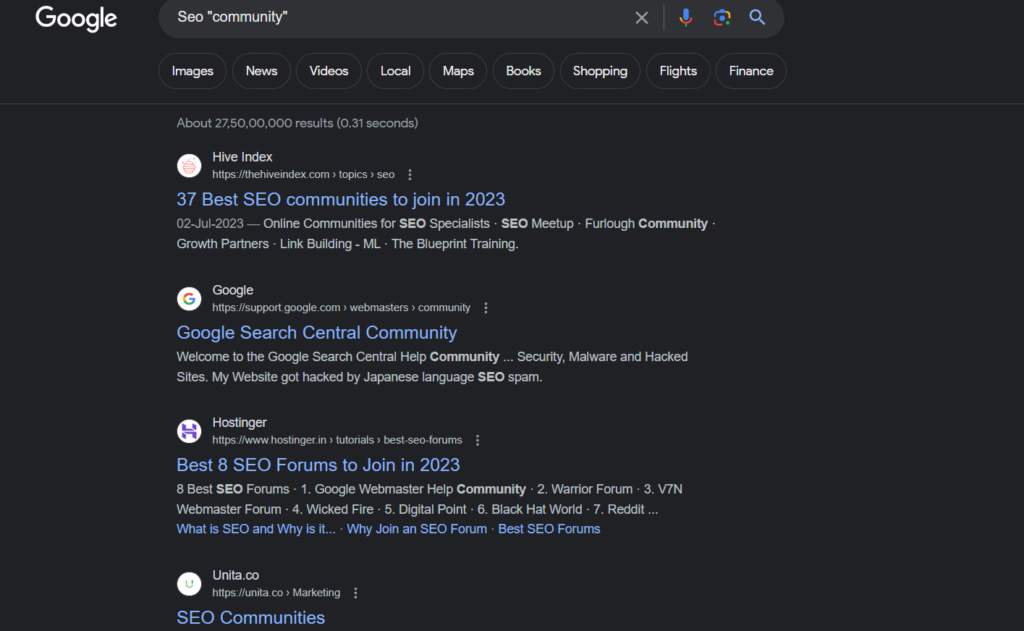
Content Checklist
Delivering top-notch content is pivotal for gaining visibility and achieving higher rankings on Google. There are actionable tips available to enhance the quality and reach of your content. Let’s delve deeper into them.
Take Featured Snippets
If you have a page ranking on Google’s first or second page, there’s a golden opportunity to capture a featured snippet. It might seem daunting, but rest assured, it’s simpler than you think.
Start by examining the current featured snippet for your chosen keyword. Observe its format. Is it a table, bullet points, or a concise paragraph? This will give you insights into content structuring.
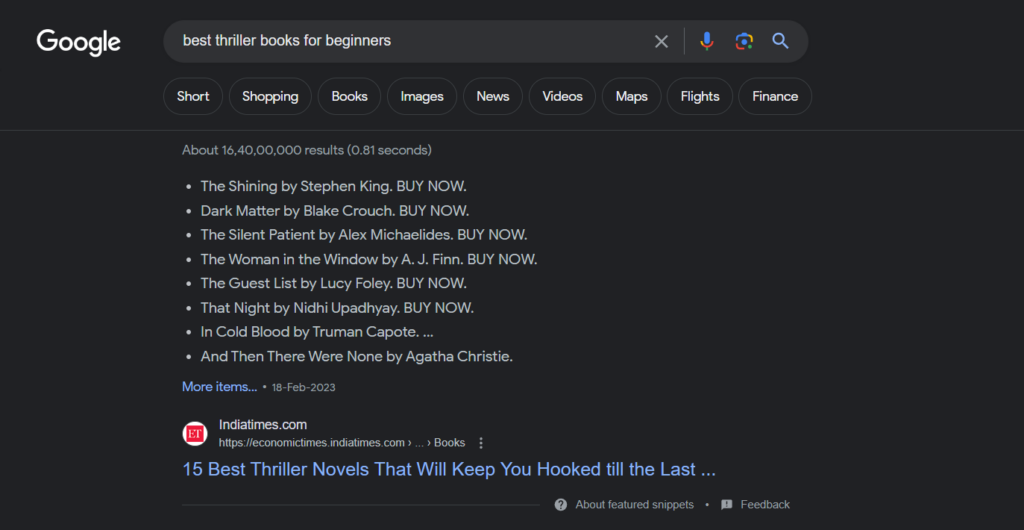
Additionally, identify the website from which Google is sourcing the featured snippet. Spend some time dissecting that page. Take note of the headings they’ve employed, the overall layout, and the way they’ve structured their content.
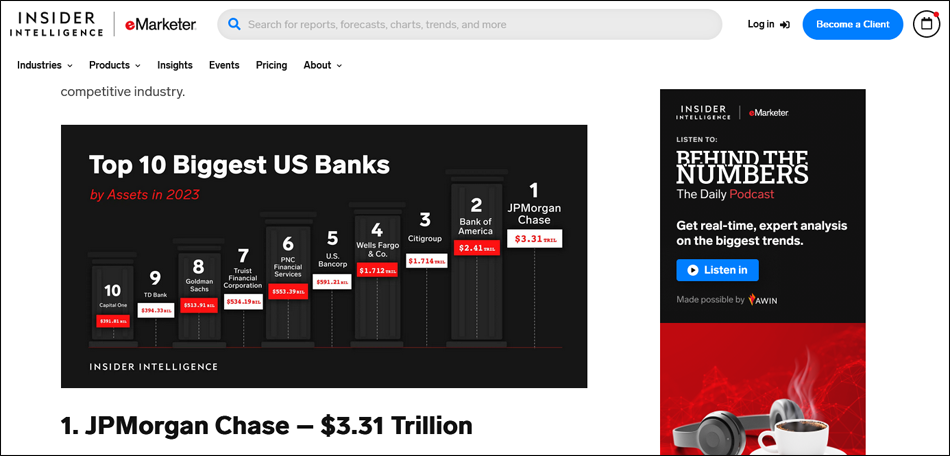
For instance, if the featured snippet seems like bullet points but originates from an article with a table, revisit your content with that insight.

Emulate your competitor’s approach. If they’ve used a table, incorporate one in your similar content. Organize your material logically. The aim is to present the same information, but in a matching format.
Once you’ve made the necessary changes and integrated them into your content, it’s essential to alert Google. Submit the URL of your revamped page to Google, allowing them to reassess your content and potentially feature it as the highlighted snippet.
Engage Your Readers With Questions
Research indicates that an audience’s attention can diminish swiftly. This can result in them losing interest in your content if it doesn’t captivate them. However, there’s a tried-and-tested technique in SEO copywriting that can potentially change this dynamic.

The key lies in harnessing the power of thought-provoking questions. Humans possess a natural inclination to seek answers; it fulfills their desire for resolution and information completion. Leaving questions unanswered tends to create a sense of unease.
Questions are most effective when they compel the audience to read on. By posing an intriguing question, it becomes almost irresistible for readers to continue on to the next section in search of an answer.
Incorporating questions into your content at regular intervals can be advantageous. This approach can help sustain your readers’ interest throughout the entire piece, ensuring they remain engaged and motivated to read your content to the end.
Organize Your Content Using Heading Tags
Heading tags are wonderful; they make your content easily digestible. Not only are they invaluable for readers, but they also play a pivotal role in the search engine optimization (SEO) of your website.
Let’s delve deeper. Headings act as subtle lures that attract visitors. They give a tantalizing glimpse of the content that follows, piquing readers’ curiosity. Consequently, crafting compelling and descriptive headings can effectively draw readers in.
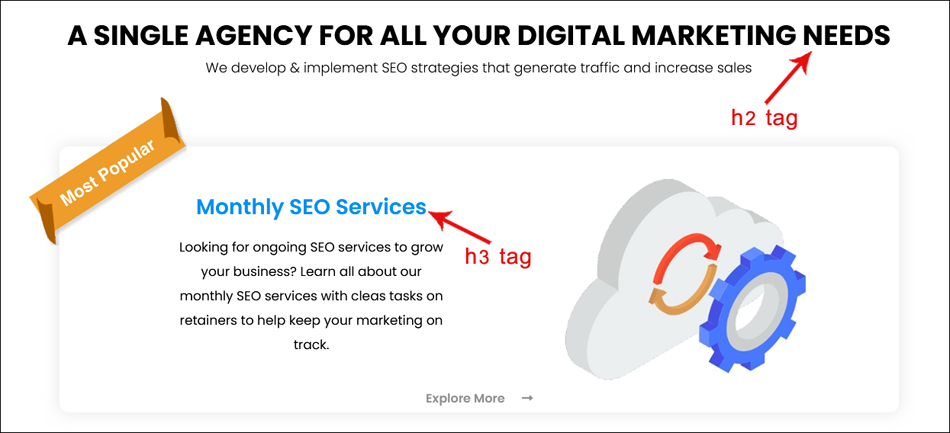
However, the importance doesn’t end with the main headings. Subheadings are equally pivotal. They sustain interest and guide readers through your content. Think of subheadings as signposts navigating readers through your narrative.
For maximum impact, craft your subheadings to be enticing and persuasive. Each one should hint at the content that follows, building anticipation. Your goal is to spark curiosity about the upcoming section, encouraging continued reading.
In essence, headers and subheadings impart a clear structure to your content, making it accessible and engaging. They attract clicks, retain readers on your page, and highlight the significance of each section.
Write in Brief Sentences and Paragraphs
Have you ever felt daunted by a large block of text? In our fast-paced world, people often skim content, seeking information swiftly.

But there’s a remedy—craft your content using short, crisp sentences to enhance readability. This approach ensures readers can process the information quickly and efficiently. Ideally, paragraphs should span no more than two to three sentences.
And remember to incorporate ample “white space” on the page. If you’re wondering what that entails, it refers to the unoccupied space between words, paragraphs, and sections. White space enhances the legibility of text, providing readers with a more pleasant reading experience.
By keeping your sentences succinct, maintaining brief paragraphs, and allowing your content room to breathe with white space, you’ll offer a reading experience your audience will appreciate.
Create a Table of Contents With Clickable Links
A table of contents provides links to different sections of your content, highlighting the headings for easy navigation. Introducing a clickable table of contents enhances the user experience by offering swift access to specific sections, thereby boosting content engagement.
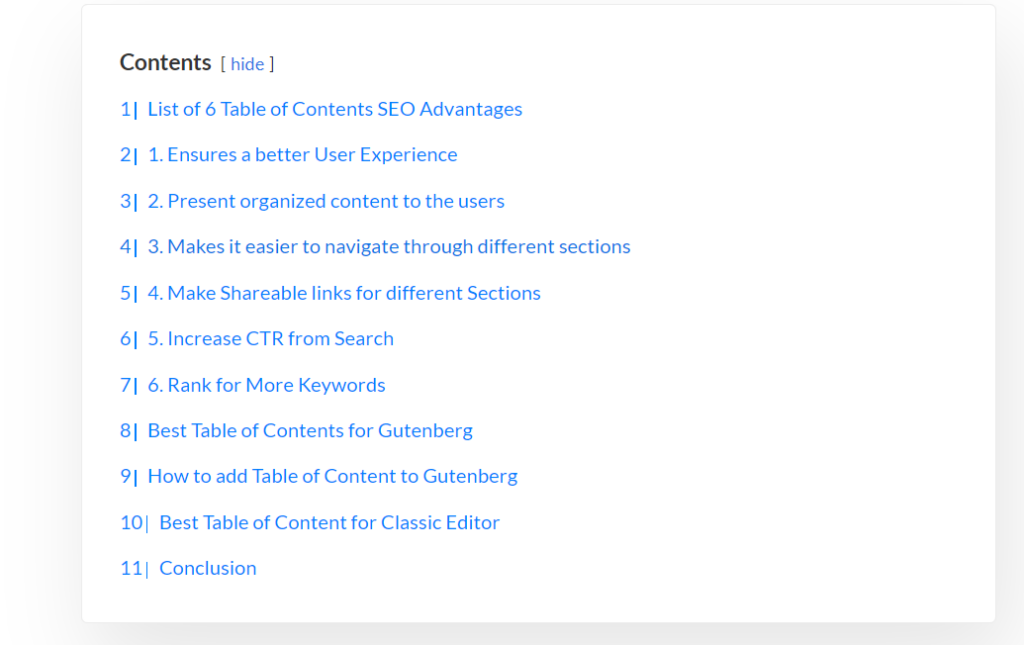
Furthermore, a table of contents can positively influence search engine rankings. By integrating a table of contents, websites can secure site links within the Search Engine Results Pages (SERPs). This can lead to improved visibility and an uptick in organic click-through rates.

For instance, on an SEO blog running on WordPress, one can use the “Table of Contents Plus” plugin. This plugin automatically generates a table of contents when you add a specific shortcode to your content. This not only simplifies the process for content creators but also enriches the reading experience for users.
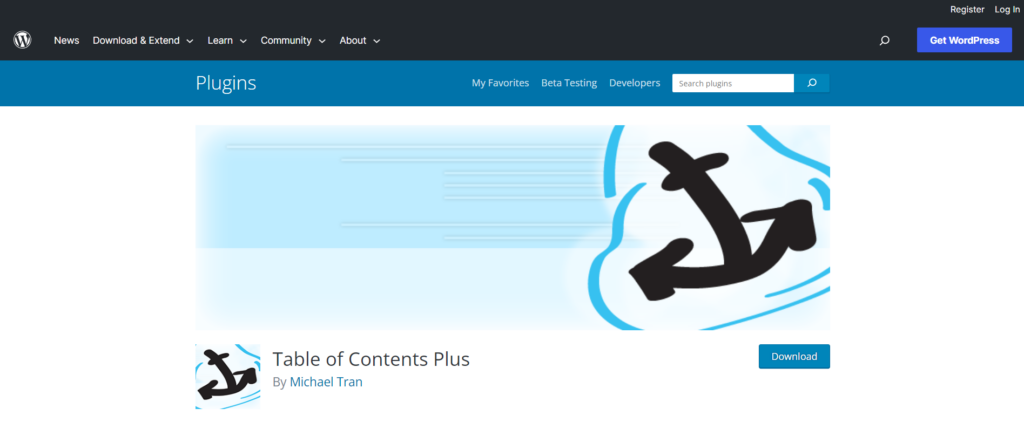
Using Pictures, Videos, and GIFs
Modern posts often incorporate various multimedia elements. Including images and other visual breaks can significantly enhance the appeal of your content. Visuals and videos retain audience interest and render the content more comprehensible.

Moreover, search engines favor content enriched with multimedia elements. By incorporating images, videos, and other visual media, your content has a higher likelihood of achieving a prominent position in search results. Besides making your content more appealing to viewers, this ensures that a broader audience can discover it via search engines.
To maximize the impact of your content, ensure you integrate a mix of visuals – be it photos, videos, GIFs, infographics, or other engaging visual elements that complement your message. This approach can elevate both search engine rankings and audience engagement simultaneously.
Use Schema Markup
Adding schema markup to your website’s pages can enhance their visibility in search results through attention-grabbing rich snippets. Schema markup facilitates search engines in better interpreting and categorizing your content.
By using schema markup, you can enhance your online visibility and potentially even the ranking of your content within search results. This is because when search engines have a deeper comprehension of your content, they can present it more effectively to users seeking related information.
SEO tools like Yoast and Rank Math can streamline the implementation process. These tools come with a built-in feature that automatically appends the necessary schema markup to your website’s pages, free of charge. This convenience allows you to divert your energy and focus to other critical facets of your website.
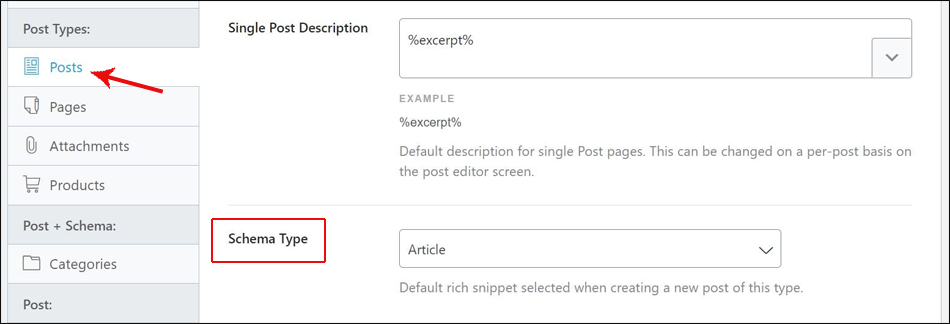
Once you’ve incorporated the schema markup, it’s vital to verify its accuracy. By employing schema validation tools, you can confirm the proper application of your markup and its intended effects. Rigorous testing is paramount as it ensures search engines interpret your schema markup correctly, boosting your prospects of acquiring rich snippets and heightened visibility.
Keep Your Content-Length in Mind
Did you know that longer content often ranks higher? On average, a blog post that appears on the first page of Google is typically around 1,447 words. However, the ideal content length can vary depending on the specific niche and topic you’re addressing.
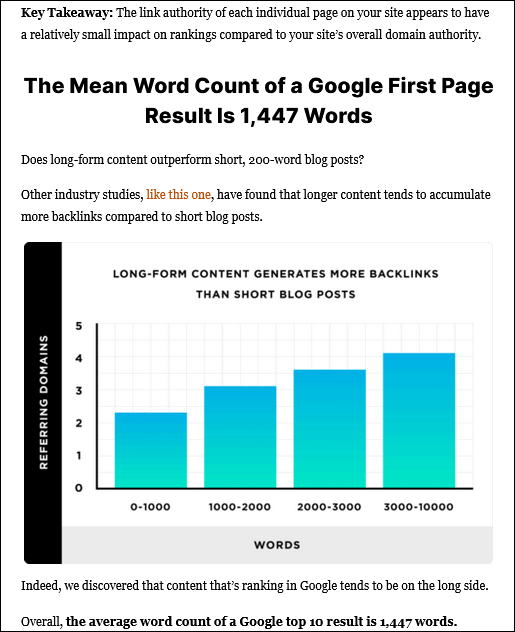
So, how do you determine the right length for your content? This is where Surfer SEO comes into play. This tool can analyze the top 20 pages that rank for a specific keyword or topic. By providing you with valuable insights on how long your blog post should be, Surfer SEO eliminates the guesswork from content creation and optimisation.
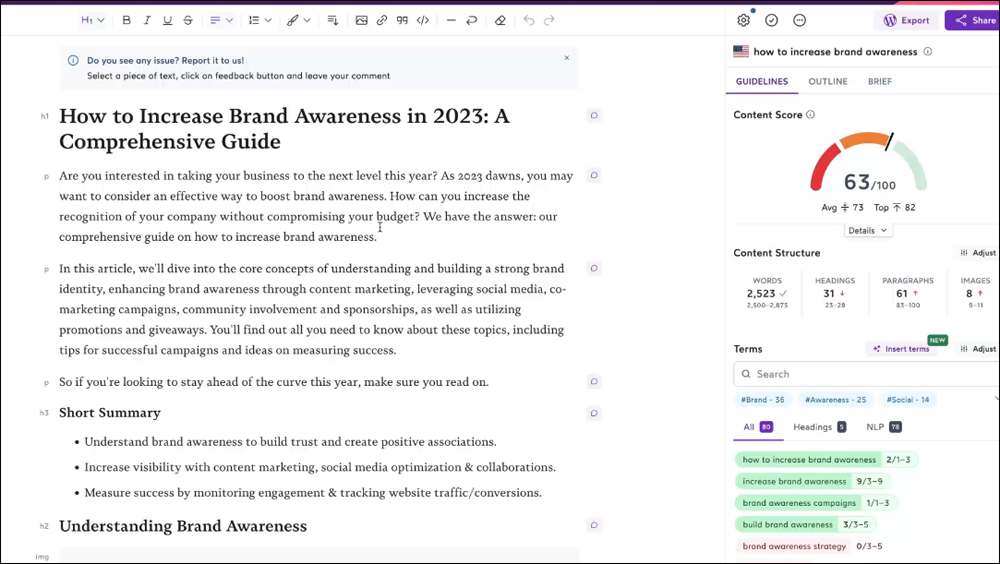
Besides advising on content length, Surfer SEO offers suggestions on the keywords and phrases you should incorporate in your content to enhance its chances of ranking higher in search results. It’s akin to having an SEO expert alongside, guiding you on the optimal ways to boost your content’s visibility and relevance.
Keep Your Content Up to Date
It’s vital to ensure your content remains current and pertinent. Over time, you may notice a decline in the ranking of a post if it becomes outdated. To maintain a commendable ranking, it’s crucial to regularly refresh your older content.

Set reminders to review your past content every 6 to 12 months. Examine each post to identify areas for enhancement or expansion. In some instances, you might even need to completely rewrite articles.
If that’s the case, don’t fret. Given the rapid evolution of many industries, this is often a necessary step. By updating older content, you achieve two key objectives:
- Continuous Content Refresh: By adding new insights or data, you ensure your content remains valuable and relevant to your readers.
- Sustaining Higher Rankings Over Time: Search engines favor fresh and recently updated content. Regularly updating your articles sends a signal to search engines that your content is useful and merits a prime position in the results.
Thus, make it a habit to revisit and refresh your older content. It’s an effective way to keep your content pertinent, retain high rankings, and continually offer value to your audience.
On-Page SEO Checklist
It’s essential to recognise the impact of on-page SEO. It can profoundly influence your website’s position in search engine results. The potential impact is genuinely remarkable! Let’s swiftly delve into the primary on-page SEO optimisations you should prioritize.
Creating Captivating Meta Descriptions
Consider your website’s meta description as a catchy advertisement, enticing readers to click on your link. With a maximum of 160 characters at your disposal, every word counts.

Crafting engaging meta descriptions can significantly enhance click-through rates from organic search results, boosting traffic to your site. A well-formulated meta description should achieve several key objectives: clearly convey the content’s subject, include your primary keyword to aid search engines in understanding your content, and captivate readers, enticing them to visit your site.
It’s worth noting that search engines, such as Google, do consider meta descriptions. Consequently, it’s essential to optimize them for both users and search engines. This means striking a balance between incorporating relevant keywords and crafting a description that’s compelling and informative for potential visitors.
Use Your Keyword in the Title, URL, and Tags
To optimize your webpage for search engines like Google, it’s crucial to strategically place your target keyword. One effective approach is to position it near the beginning of your page title and title tag. By doing so, you send a clear signal to Google about the primary focus of your content.


Furthermore, incorporating your main keyword in your URL is advisable. This helps search engines discern the relevance and intent of your webpage. When your URL embodies the keyword, it facilitates the proper categorisation and indexing of your content.

By featuring your target keyword prominently in your page title, title tag, and URL, you provide vital information to Google. This enhances the probability of your webpage being correctly classified and featured prominently in search results.
Keep Your URLs Short
Why is it important to maintain succinct URLs for your website? Research indicates that webpages with shorter URLs tend to rank higher in Google’s search results. This ties back to the search engine optimisation (SEO) of your website.
By “short URLs”, we mean those that ideally only contain your main keyword, ensuring clarity and focus. A precise URL enables search engines to easily determine the purpose of your webpage, thereby potentially boosting its visibility in search results.

In fact, many SEO experts suggest that your URL should not exceed 73 characters. This recommendation stems from the belief that shorter URLs are easier for both users and search engines to read, comprehend, and remember.
However, if you’re considering shortening your existing URLs, proceed with caution. Even with correctly implemented 301 redirects, which guide users and search engines from the old URL to the new one, the search traffic to that webpage might experience a temporary dip. Thus, it’s vital to carefully evaluate the prospective implications and weigh the benefits against potential setbacks before altering your current URLs.
In summary, concise URLs that align with your main keyword can bolster your website’s SEO, enhancing its chances of ranking higher in search results. Just remember to consider the potential repercussions of changing established URLs and make informed decisions based on your specific circumstances.
Use Internal Links
Often, the importance of internal linking is overlooked. Google has highlighted that the number of internal links pointing to a specific page is a clear indication of that page’s significance. However, Google doesn’t solely rely on the quantity of links. It also considers elements like anchor text—the clickable text in a link—and the surrounding content to determine the topic and relevance of the page.
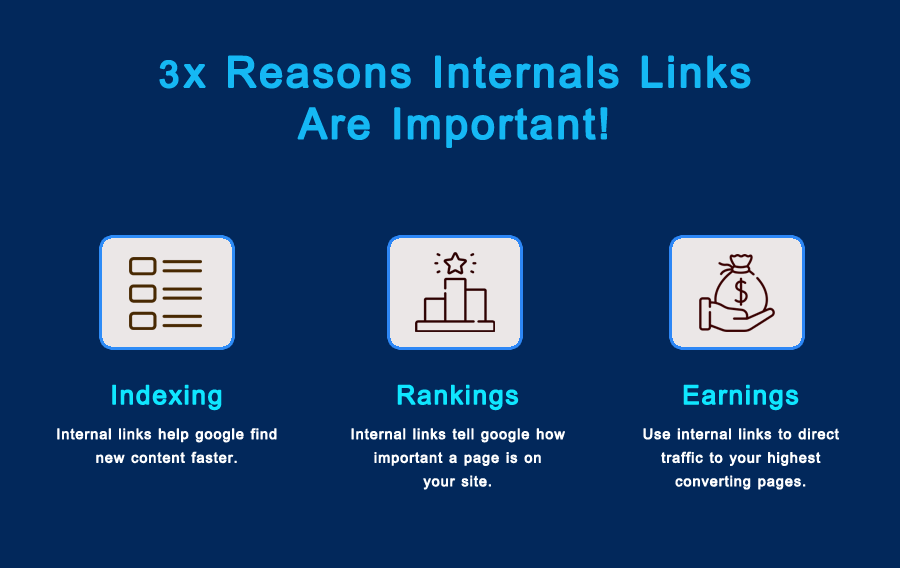
In essence, internal linking is pivotal for SEO. If you’ve not prioritized internal linking until now, it’s high time you did. It can profoundly influence how search engines perceive and rank your website.
Link to Credible Resources
When crafting blog articles, it’s wise to include at least two external links to pertinent, authoritative sites. This practice serves multiple purposes.
Firstly, providing external links showcases that your content is well-researched and credible. By linking to esteemed sources, you substantiate your points and demonstrate thorough research. This is crucial as search engines like Google prefer content that is both evidence-backed and reliable.
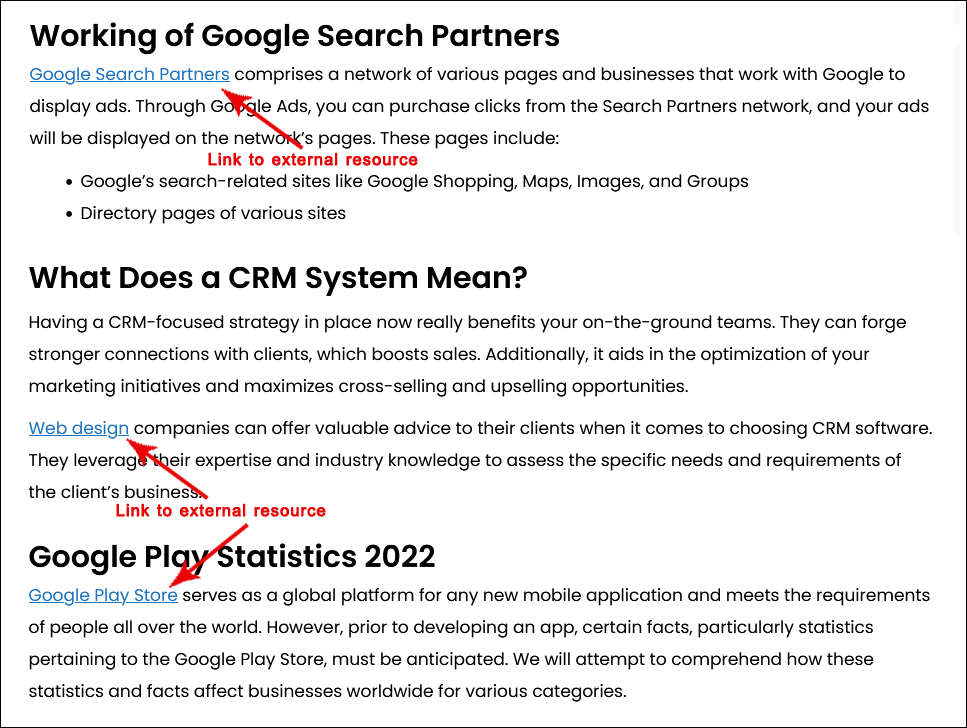
Secondly, linking to reputable websites that Google already recognises boosts your site’s trust factor. In the eyes of search engines, your content’s credibility and authenticity are enhanced when they detect connections to trusted sources. Consequently, this could translate to improved rankings for your content.
In essence, incorporating external links in your blog posts enhances the authority of your content and reinforces Google’s trust in it. Moreover, with elevated credibility and trustworthiness, your chances of achieving higher search engine rankings increase, augmenting your online visibility.
Improve Your Images
Image SEO is crucial for enhancing your website’s performance, but its potential impact is often underestimated. To harness its benefits, adhere to these guidelines:
- Equip your images with pertinent alt text that accurately depicts them.
- Employ descriptive file names for your images, eschewing generic labels like “IMG3215004.jpg” in favor of specific ones such as “beautiful-sunset-over-ocean.jpg.”
- Compress your images to expedite their loading times. This not only ameliorates the user experience but also aligns with the preferences of search engines like Google.
- Adjust your images’ EXIF data to provide additional context about them.

Regrettably, many individuals neglect these nuances, leading to images with default names like “IMG3215004.jpg” and devoid of alt texts. This omission makes it challenging for search engines to decipher the image’s context.
You can employ tools like Shortpixel to adeptly compress your images. This handy plugin automatically shrinks them upon upload, reducing their file sizes. By implementing these techniques, you bolster your website’s image SEO, hasten page loading times, and subsequently endear yourself to search engines like Google.
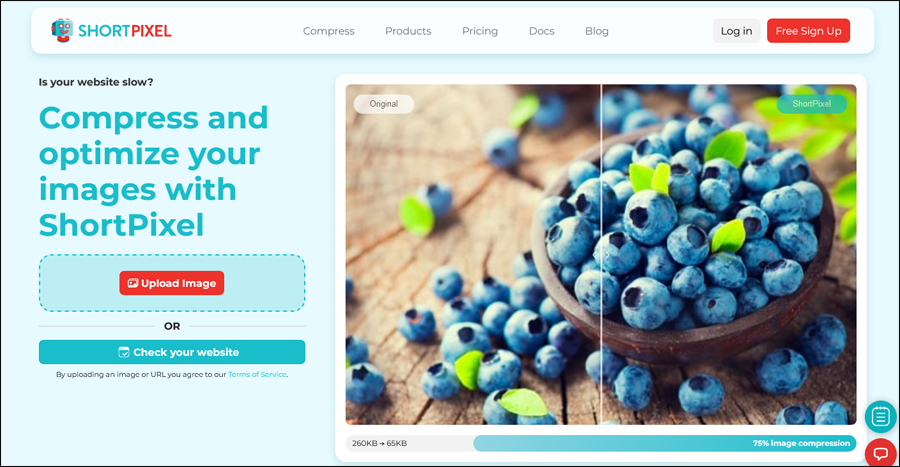
Link Building Checklist
If your goal is to boost organic traffic to your site, focusing on off-page SEO and link building is imperative.
While many perceive off-page SEO solely as link building, it encompasses much more. The objective is to bolster your site’s credibility and visibility beyond its own domain. Leveraging off-page SEO strategies can elevate your site’s stature and prominence in search engine results.
Link building is a pivotal part of this. By securing high-quality and relevant links from trusted websites, you signal to search engines like Google that your site is reputable and merits a commendable rank in search results. Essentially, these backlinks vouch for your site’s authenticity.
However, off-page SEO isn’t restricted to link building alone. It also includes engaging on social media platforms, managing your online reputation, collaborating with influencers, and promoting content on external platforms. All these measures collectively augment your site’s authority, traffic, and presence on Google’s search engine results pages (SERPs).
Hence, if your aim is to amplify organic traffic to your site, prioritizing off-page SEO and link creation are essential. It transcends mere link generation; it’s about bolstering your website’s authority and employing myriad tactics to distinguish yourself in the competitive digital landscape.
Are Your Backlinks on the Blacklist?
Certain websites are notorious for having blacklisted backlinks, including those with “write for us” pages, PBNs (Private Blog Networks), identified guest post farms, and sites approached through unsolicited outreach. Such backlinks can jeopardize the SEO endeavors you’ve invested in, and Google might even penalize your site for them.
Navigating out of a Google penalty is a daunting task, demanding significant effort. Hence, it’s paramount to ensure your link-building efforts pivot around high-quality links.
Thankfully, there’s a remedy at your disposal. The LinksThatRank backlink blacklist tool allows you to promptly assess your backlinks without any charges. By simply pasting your links into the tool, you can instantly ascertain if any are blacklisted.
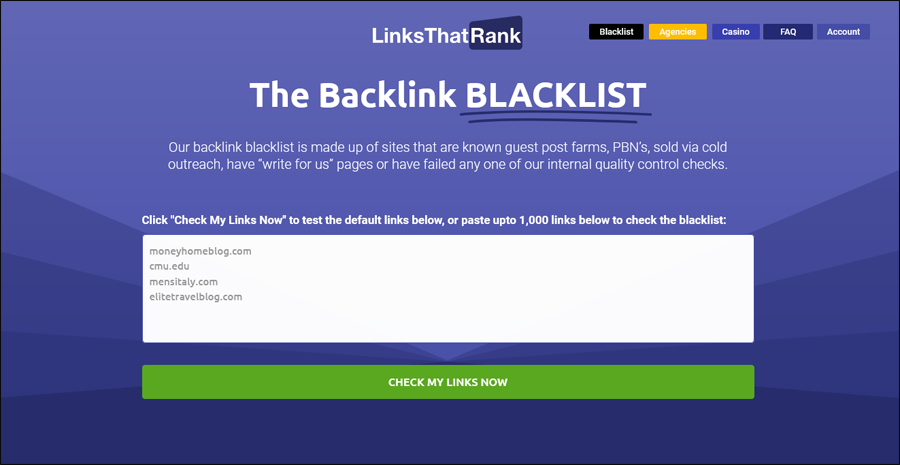
Moreover, the tool provides an exhaustive rationale and an accompanying screenshot to elucidate why a specific site was blacklisted. Such a resource is invaluable, safeguarding the integrity and resilience of your backlink profile.
Which Pages Should You Link To?
If someone is uncertain about which pages to emphasize in their link-building efforts, there’s a straightforward approach they can adopt. The initial step involves analyzing the keywords for which their website currently ranks on the first three pages of Google. These are terms that have already garnered some visibility for the site.
To streamline this process, one might contemplate using tools such as Ahrefs or Semrush, both of which offer free trials. These platforms can provide valuable insights about the site’s performance and its standing for specific keywords.
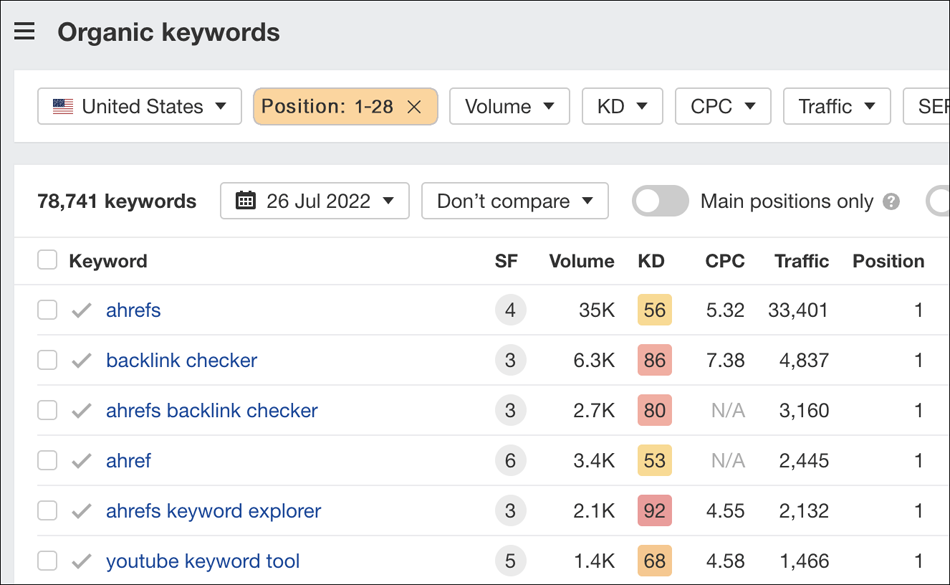
The essence of successful link-building revolves around focusing on the keywords most beneficial to the business. It’s pivotal to pinpoint a select set of keywords that hold the potential to elevate lead generation and augment sales.
Once this list has been curated, attention should be channeled to the website pages ranking for these keywords. As these pages have already achieved a degree of visibility, they’re prime candidates for further link-building endeavors.
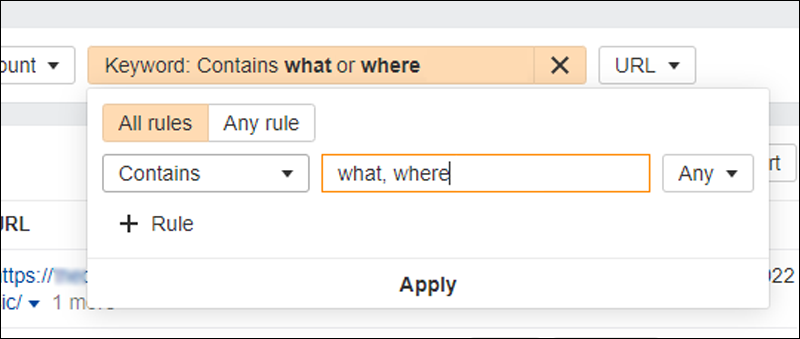
By prioritizing link building for these specific pages, one can amplify the impact and enhance the probability of clinching higher spots in search engine results.
How Many Links Are Needed to Rank?
After earmarking the target pages for link generation, the next task is determining the number of backlinks required to clinch a top-three ranking. It’s prudent to avoid amassing excessive links, given that link-building can drain both time and resources. Let’s delve into the subsequent steps.
Having tools like Ahrefs or Semrush in one’s arsenal is fundamental. While both tools are resourceful, in this context, Ahrefs might have an edge due to its comprehensive capabilities.
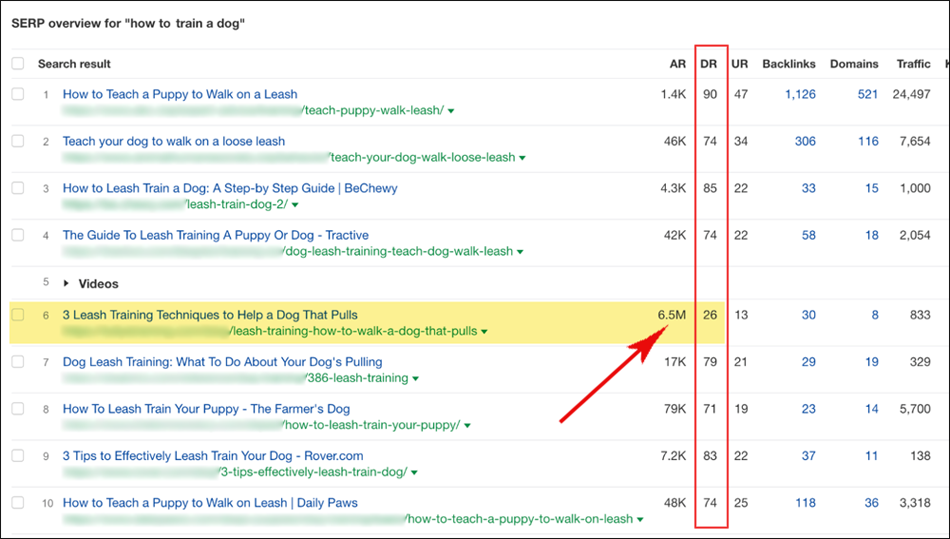
The user should begin by researching their target keyword and pinpointing similar authority sites that currently occupy the top ten positions. Identifying such sites is a positive indication.
Next, it’s imperative to examine the backlink profiles of the top three ranking websites. Identify the links that contribute to their dominant positions. These insights should encompass do-follow links. The focus should be on gauging the number and authority of do-follow links each of these top pages boasts.
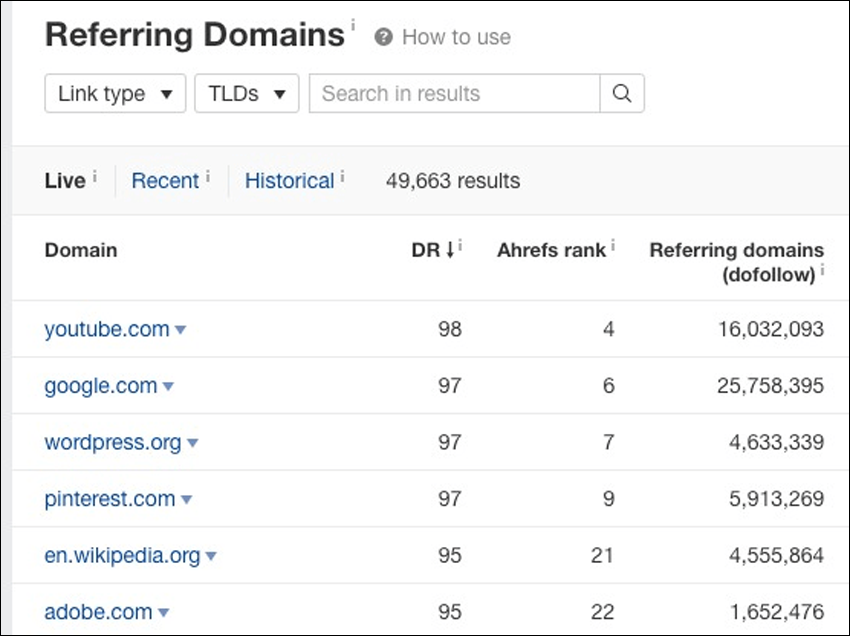
Upon scrutinizing each of the top three websites, the user will obtain a lucid understanding of the backlink disparity they face. Occasionally, this gap might span hundreds of links, but often it’s considerably fewer.
Based on this analysis, they can evaluate the feasibility of targeting that specific keyword and gauge the investment required to secure the necessary backlinks.
Connect Links With Events
Event-based link building is a potent tactic to acquire quality links and elevate brand visibility. Beyond the inherent visibility derived from the event, it provides an avenue to gain high-caliber backlinks. This dual-pronged approach offers a cost-effective method to enhance brand awareness and acquire valuable links.
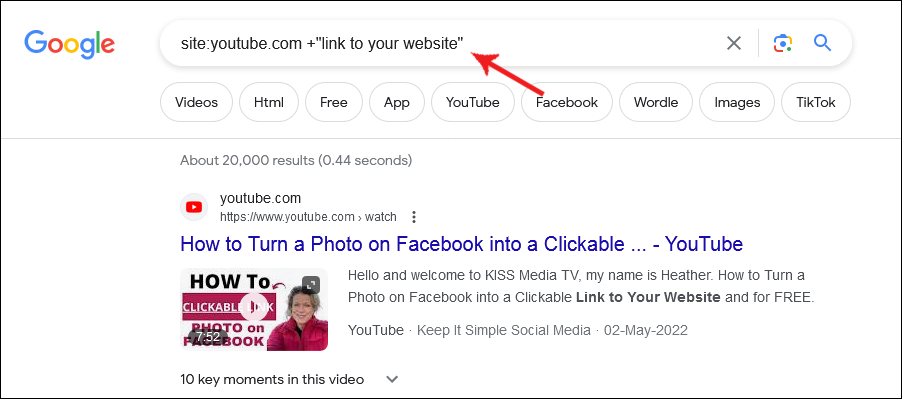
To capitalize on event link building, one must first identify events pertinent to their industry or domain, be they physical or virtual. By sponsoring such events, brands can secure a prominent listing on the event’s designated “sponsors page”, leading to a valuable backlink to their site.
The specific events to sponsor are determined by the unique contours of one’s industry or domain. By judiciously selecting events, it’s possible to ensure that the procured backlinks emanate from relevant sources. This meticulous approach augments the efficacy of one’s link-building strategy.
Include Customer Reviews as Links on Your Homepage
Are you in search of high-authority backlinks for your homepage? Testimonial link building might just be your solution. This approach has proven effective over time.

Here’s how it operates: Share your genuine appreciation for the products, tools, or services you utilize. In response, these businesses might feature your positive testimonial on their website, appending a link to your site right beneath your feedback. For instance, I secured a significant boost in my site’s authority from a DR61 link I received from the Surfer team.
The best bit? You probably already possess the assets to begin. The process is streamlined into the following steps:
- Enumerate the products or services for which you’d like to pen testimonials.
- Ascertain the respective companies’ contact details.
- Reach out via email, proposing your testimonial.
- Draft a compelling testimonial accentuating your positive experiences.
- If possible, enhance your testimonial with an accompanying video.
That’s the entire blueprint! This tactic is universally applicable, suitable for nearly any sector or niche.

For a deep dive into each step with comprehensive guidance, I suggest perusing my detailed guide on testimonial link building. It equips you with all the essentials to effectively harness this strategy and optimize results.
Be a Guest on Podcasts
Tapping into podcasts as a guest, commonly referred to as “podcast jacking”, is an adept link-building strategy that carries multifaceted benefits for both your enterprise and website. Engaging as a podcast guest not only elevates your brand’s stature and augments website traffic but also cements your authority within your domain. Plus, it’s a free avenue to secure premium links.
The podcast jacking methodology is unambiguous. Firstly, identify podcasts resonating with your target audience and sector. Having curated a list and gathering contact details of either the podcast hosts or their production teams are vital for guest pitching.

The core objective? To feature as a guest on renowned podcasts, dispensing valuable insights to listeners. The beauty lies in the potential for automating large swathes of this process, ensuring both efficacy and time-saving.
Link-building comes into play when these podcast episodes air. Typically, the episode descriptions or show notes encompass links directed to the guest’s website, presenting an opportunity for you to cultivate top-tier, authoritative backlinks to your platform.

A savvy approach involves targeting podcasts previously graced by notable figures from your sector. This heightens the probability of securing an interview slot for yourself.
Crowdfunding for Building Links
Crowdfunding, an oft-overlooked link-building strategy, harbors substantial potential.
The mechanics of crowdfunding are simple yet impactful. Numerous fledgling businesses scout for financial contributions to jump-start their ventures. In gratitude for your patronage, they reciprocate by featuring you on their website, complete with a backlink.
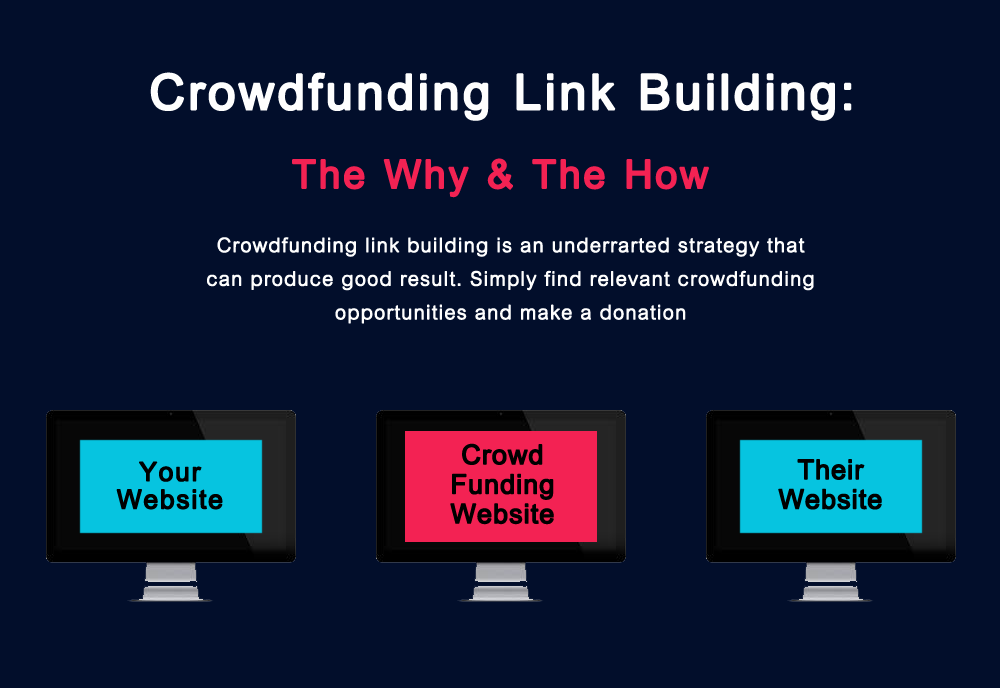
Crowdfunding’s allure lies in its adaptability. You’re at liberty to either make a nominal donation or significantly larger amounts. This affords a golden opportunity to bag quality backlinks without breaking the bank.
In essence, crowdfunding engenders a win-win scenario. While startups secure much-needed capital to bring their visions to life, you are rewarded with backlinks and increased visibility. It’s a potent, yet frequently untapped, tool in the link-building arsenal.
Publishing guest posts is an organic and efficient way to enhance your link’s popularity. Although some argue that all link-building goes against Google’s guidelines, making it not entirely a “white hat” SEO technique, guest post-based link-building is still seen as quite natural.
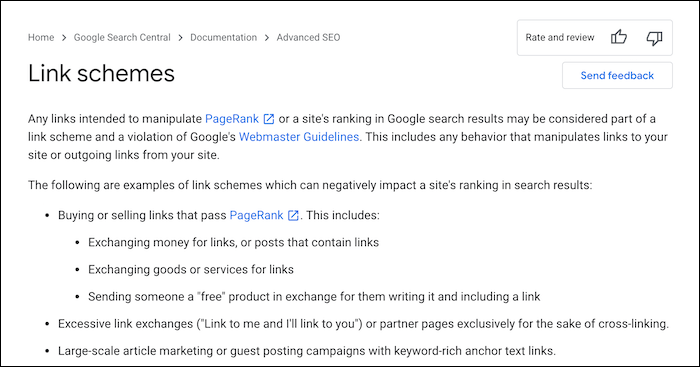
The process for guest posting is fairly straightforward. Firstly, identify relevant, high-quality blogs in your industry. Once located, gather their contact details. Propose a topic or theme for your guest blog post. Then, craft a stellar piece of content that includes a link back to your site. After completing the article, aim to get it published on the targeted blog and share it with your own audience.
For success in this endeavor, it’s vital to focus on establishing connections with high domain authority websites. Rather than attempting to guest post on every site sporting a “write for us” banner, strategically select renowned sites with significant authority in your niche. This approach ensures you engage meaningfully with readers while providing genuine value.
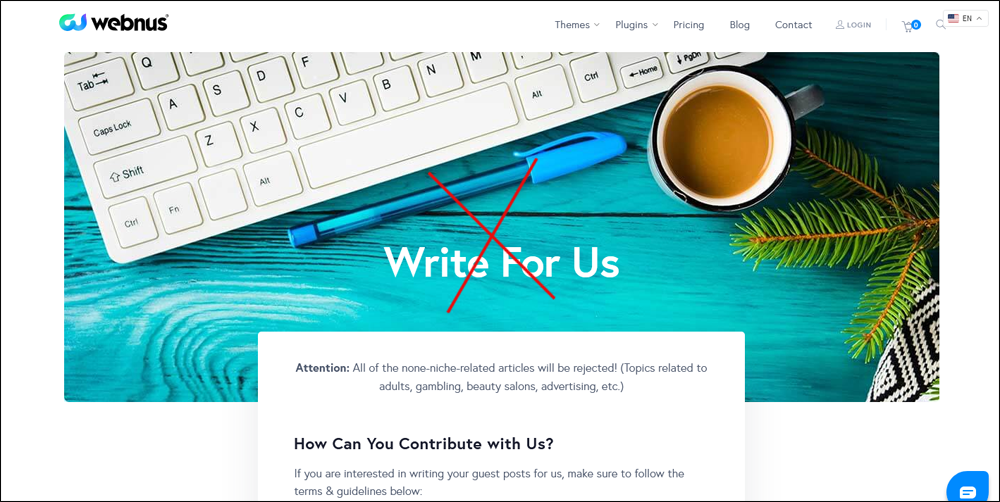
Adhering to this mindset increases the probability of long-term success in guest posting.
Conclusion
In conclusion, this SEO checklist encompasses a comprehensive set of techniques that can notably augment your search traffic. Implementing these strategies can enhance your site’s visibility, attracting a greater number of visitors. By conducting robust keyword research, optimizing on-page elements, delivering quality content, and building an effective backlink profile, you can elevate your position on search engine results pages (SERPs).
Furthermore, ensuring your website’s mobile responsiveness, enhancing page load speeds, and proficiently leveraging social media platforms can bolster search traffic. It’s vital to remember that SEO is an ongoing endeavor. Constant monitoring and adjustments, based on analytics and evolving algorithms, are imperative. By sticking to this checklist, you can lay a robust foundation for your SEO initiatives and foster enduring organic growth.
FAQs
How long before I see results from SEO?
Several factors, such as keyword competition, site age, and algorithm alterations, influence the time SEO takes to show noticeable outcomes. Typically, a span of several weeks to months is required.
Do I need an SEO specialist for my site’s optimization?
An SEO expert can be invaluable if you’re short on expertise, resources, or time. They bring to the table advanced tactics, a knack for staying updated with algorithms, and strategic insights. However, with adequate knowledge and tools, you can also undertake SEO independently.
Are there inherent risks in SEO?
Yes, while the aim of SEO is to enhance site visibility and traffic, certain risks exist. Black hat SEO tactics, like keyword stuffing or link buying, can lead to search engine penalties. It’s crucial to adopt ethical and sustainable SEO practices to mitigate these risks.
How frequently should my SEO strategies be updated?
SEO is a dynamic realm. Given evolving user behaviors, search engine algorithms, and competitive landscapes, continuous revisions and updates to your SEO are necessary. Regularly review your strategies, monitor key performance indicators, and adjust as needed.


